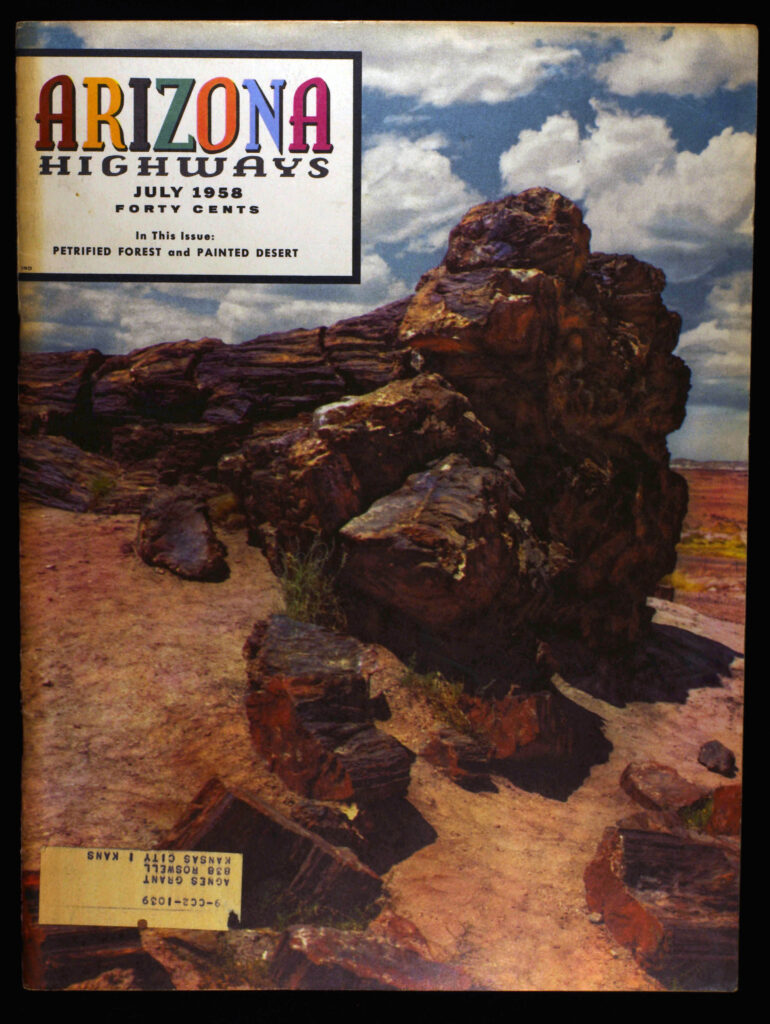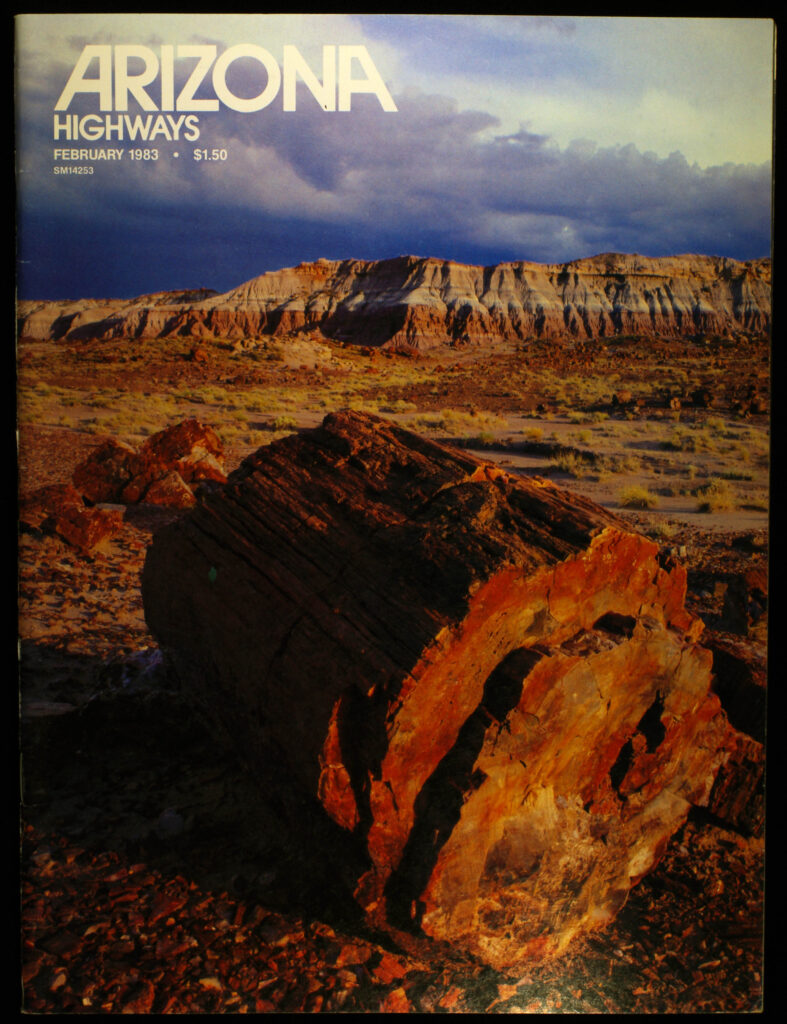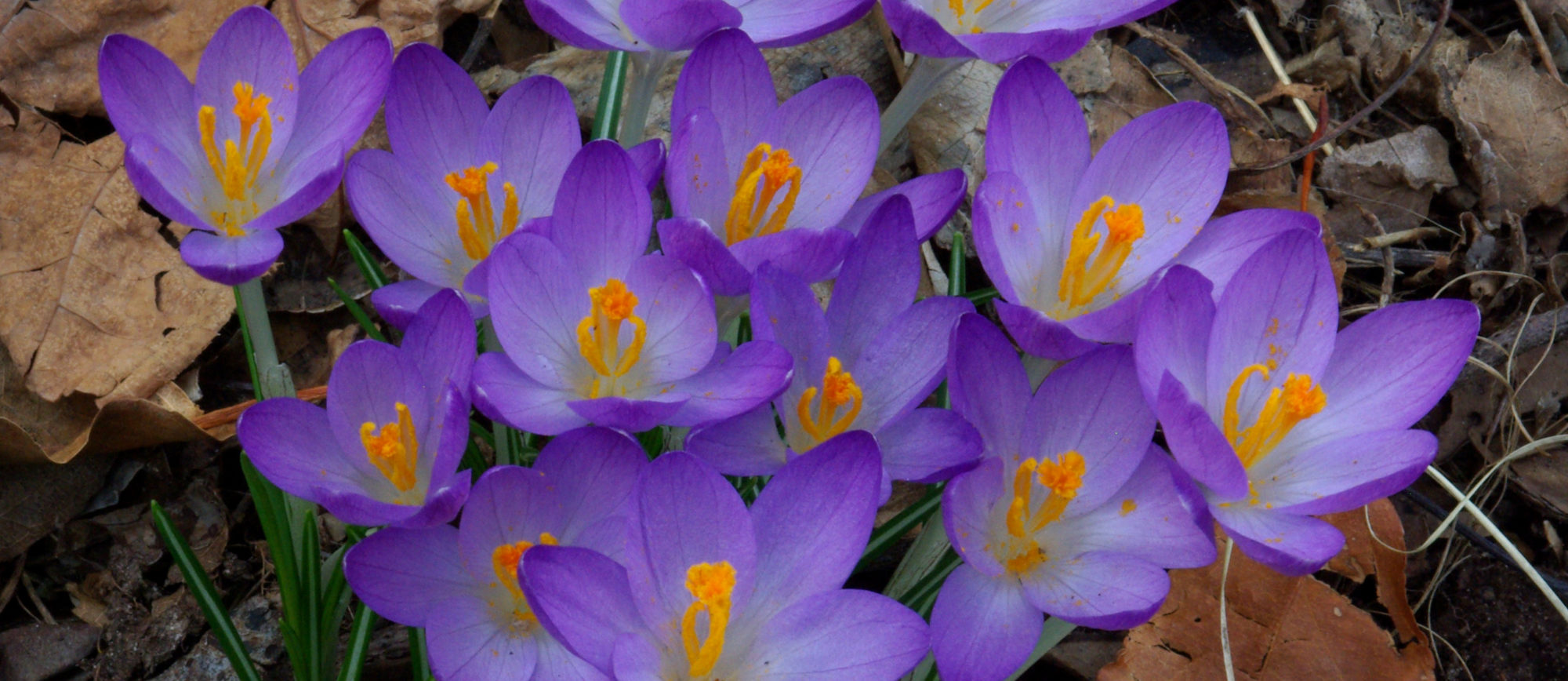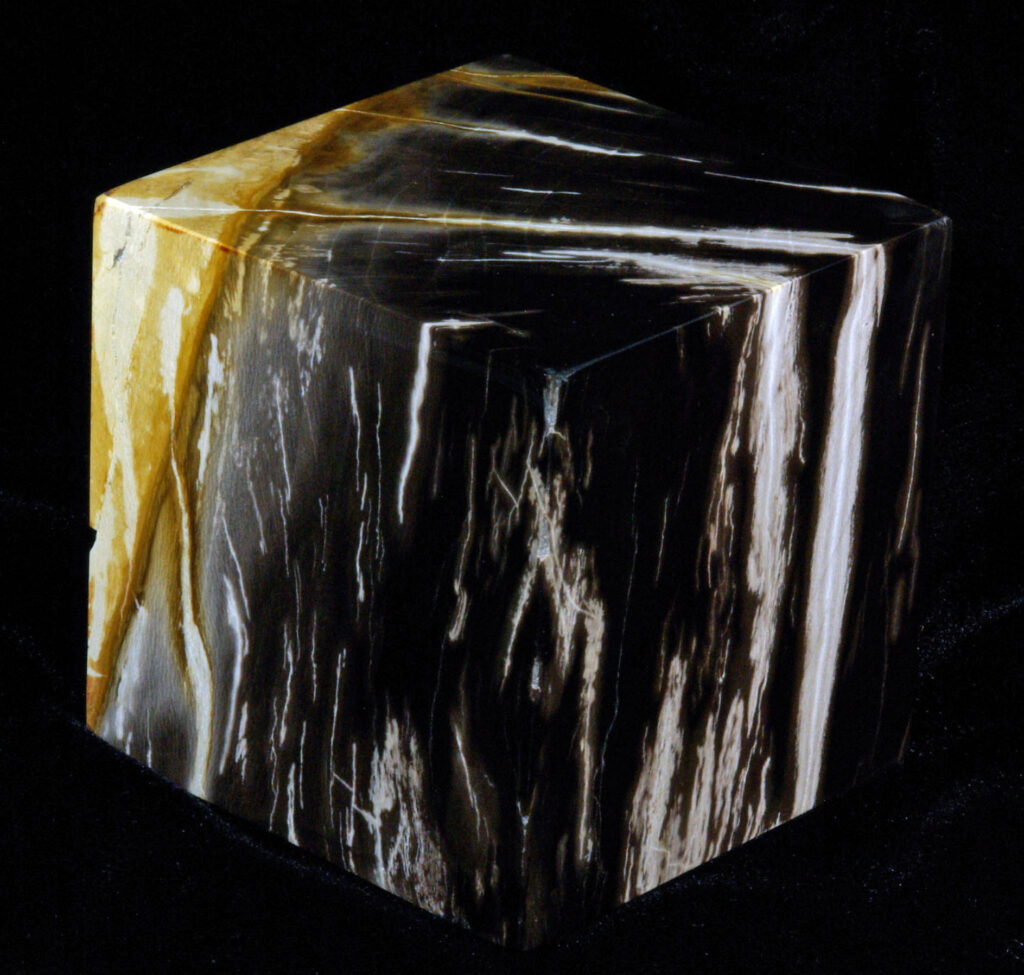
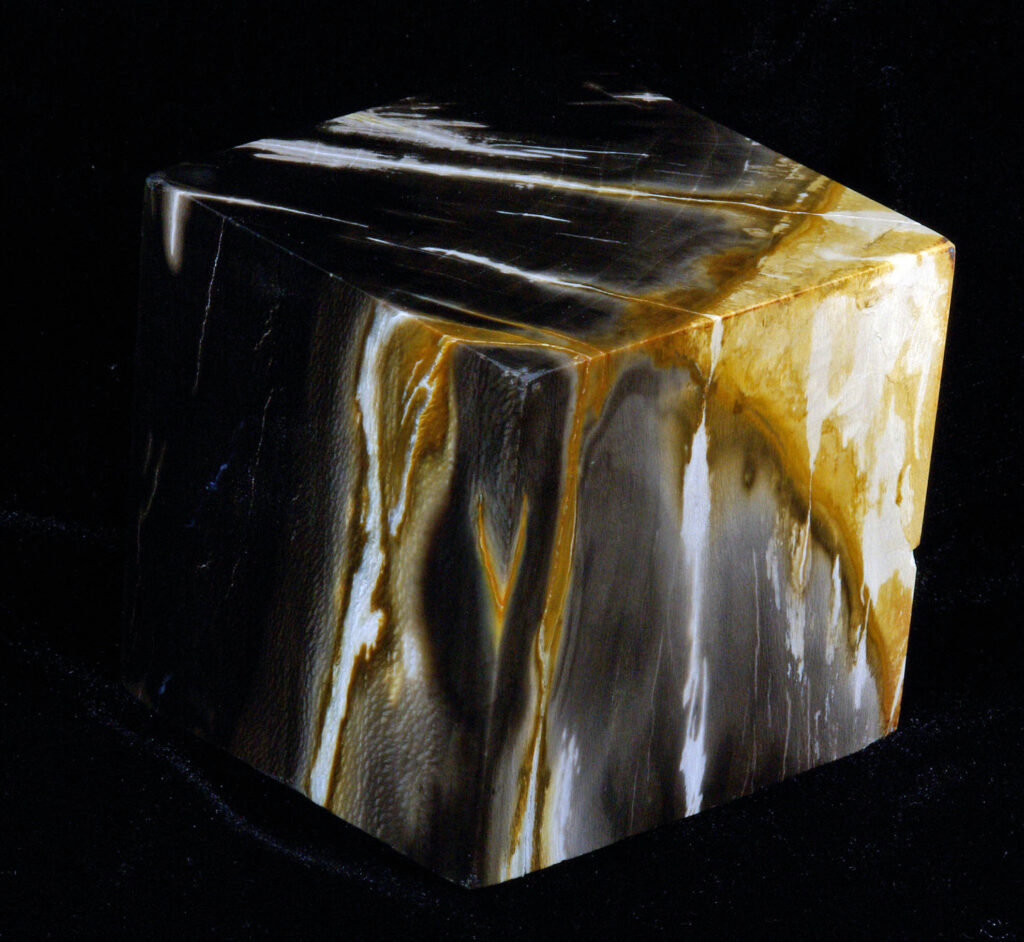

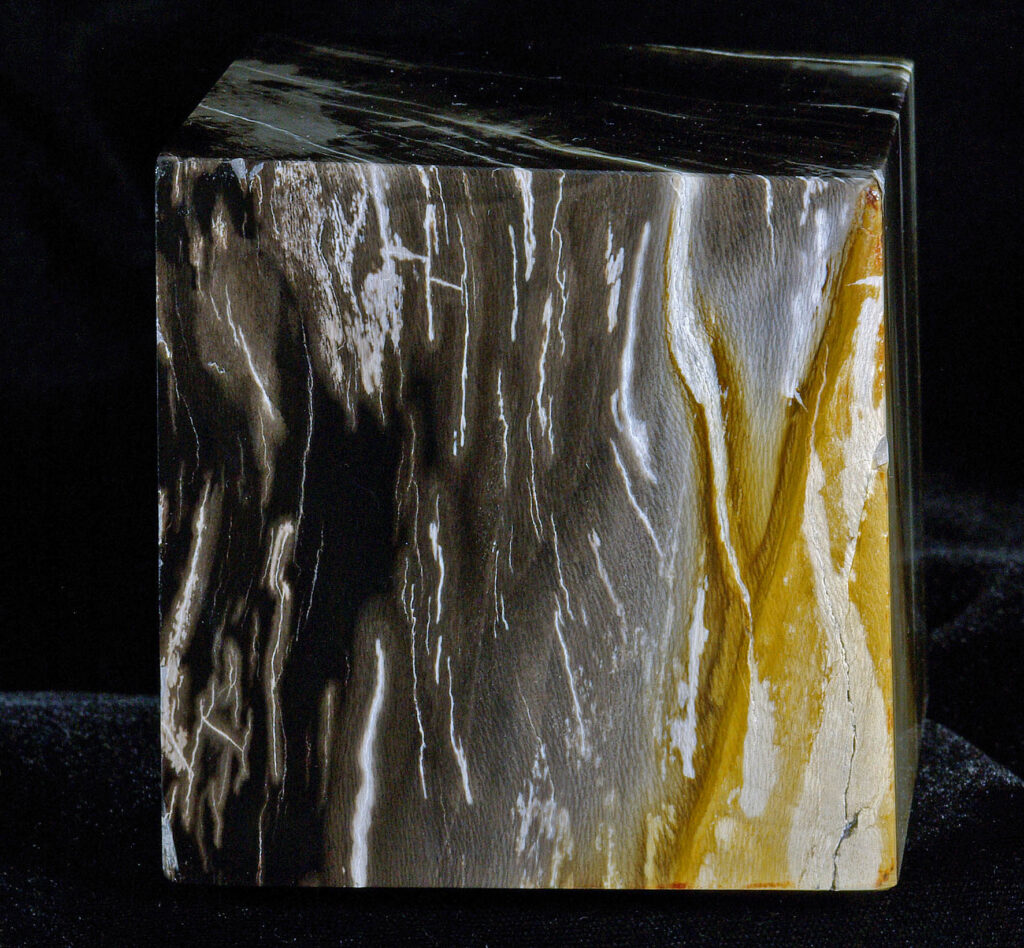
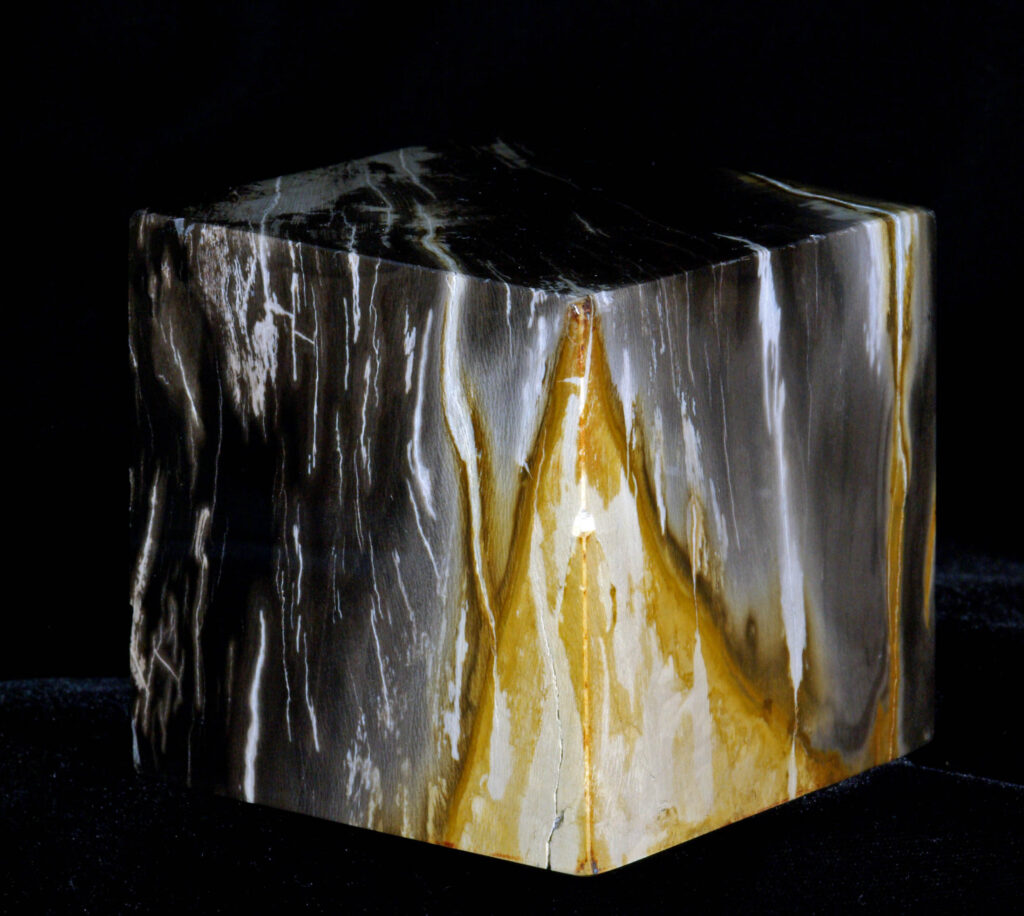

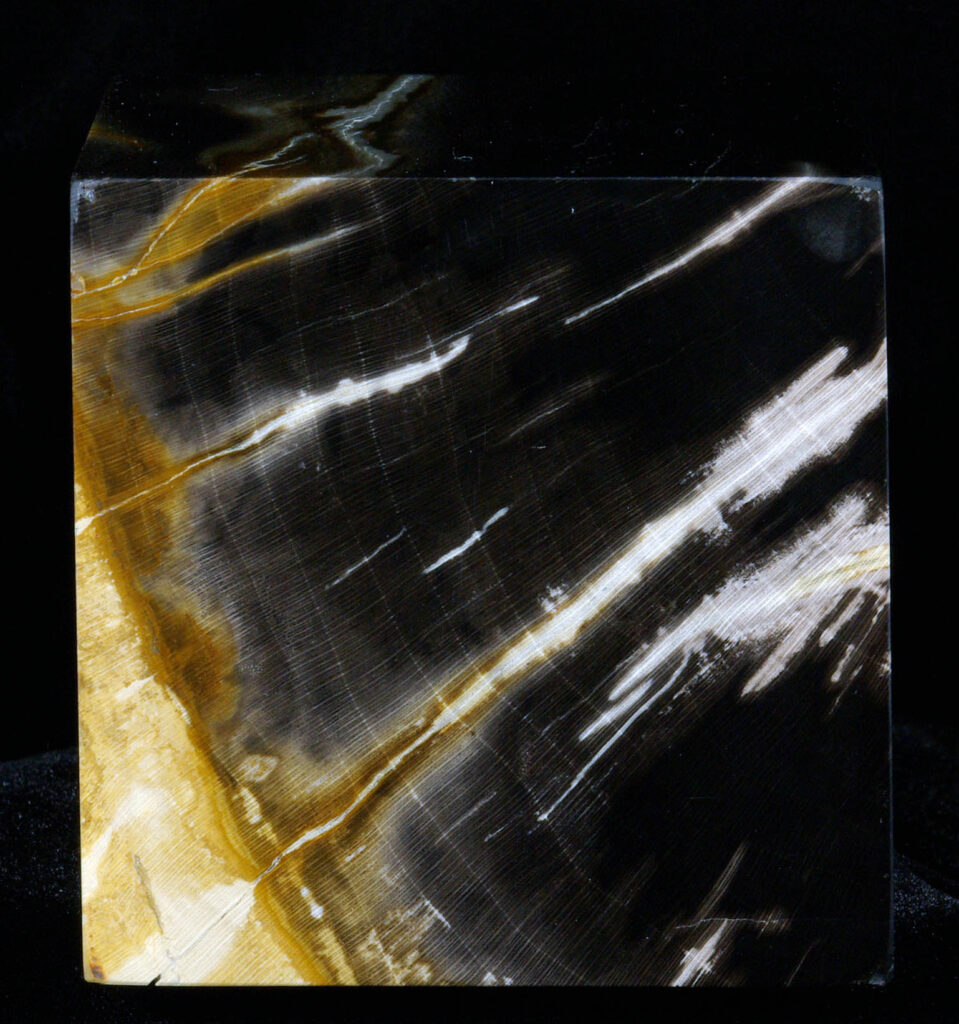

Large cube. Petrified sycamore from the Skip Adam’s ranch, Sweet Home, Oregon. Many fine woods have been found in the Sweet Home vicinity. In my experience, some of the very best quality came from Skip Adam’s ranch, much of it beautifully preserved fossil sycamore like this. Cut in my old Highland Park 24-inch rock saw and polished by an Oregon polisher on all six sides. Longitudinal, tangential, and cross-sections are properly aligned for microscopic observation. No glue or filler. 8 cm cube; three pounds and three ounces.
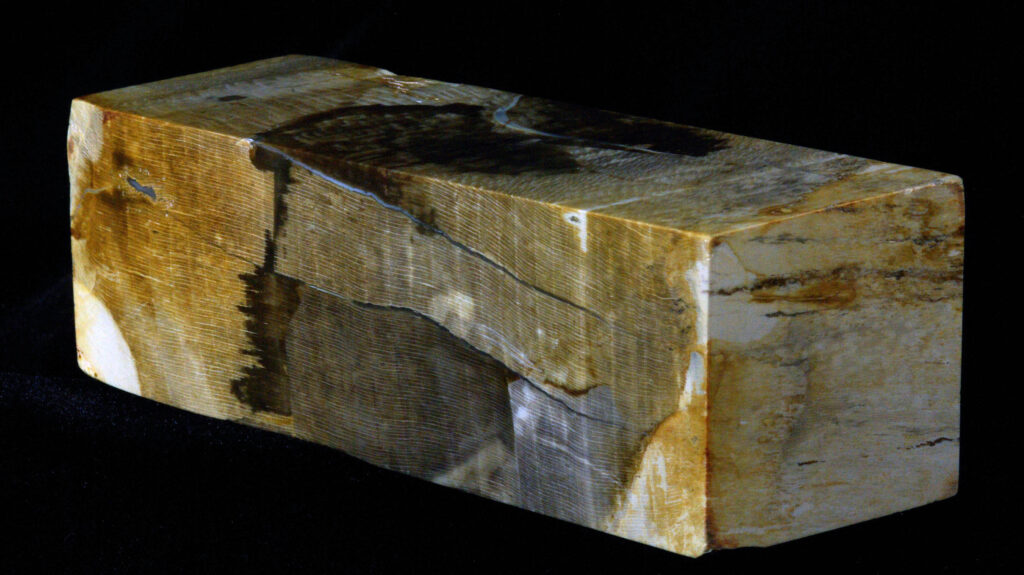

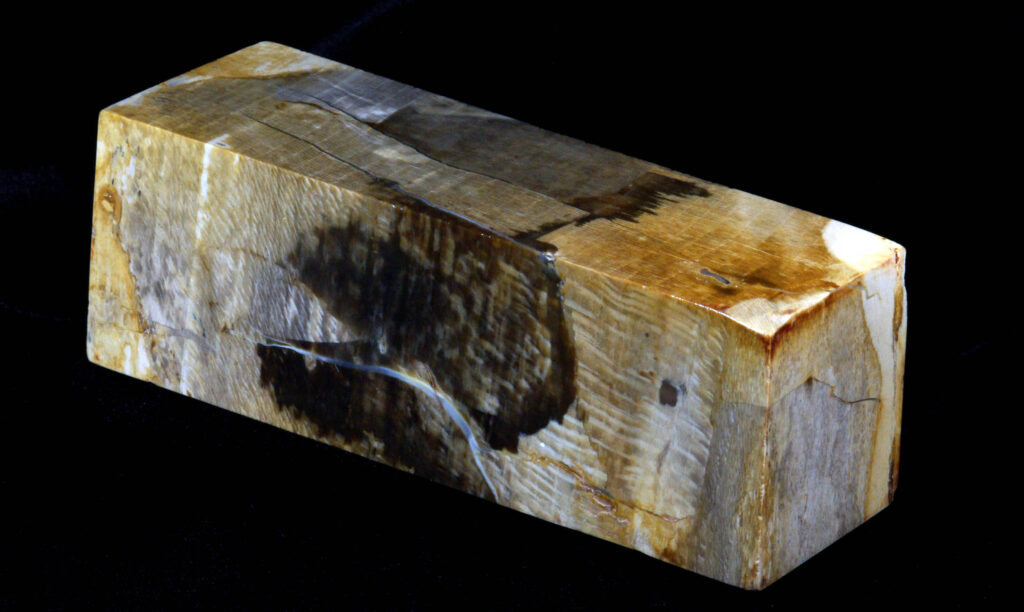
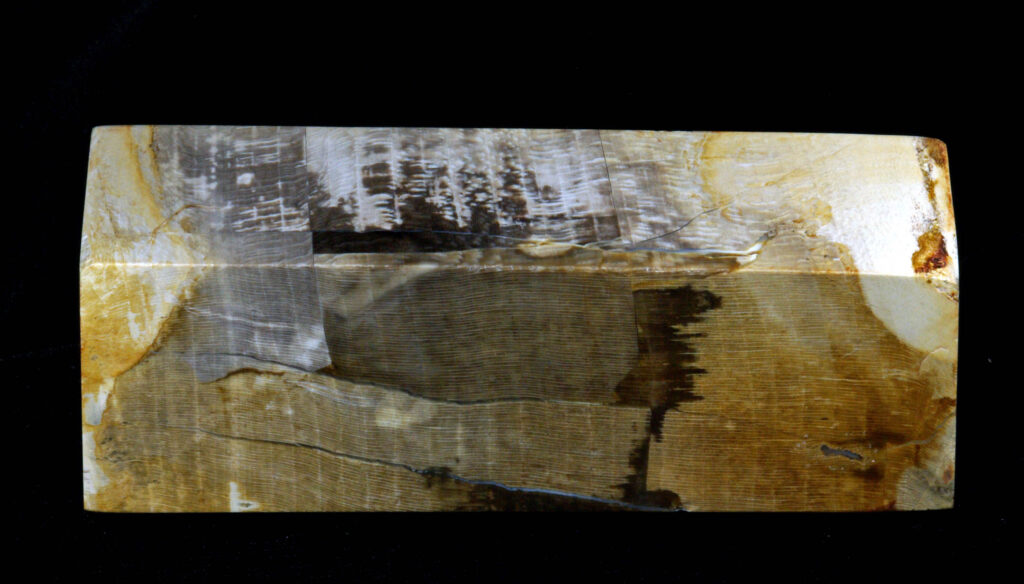

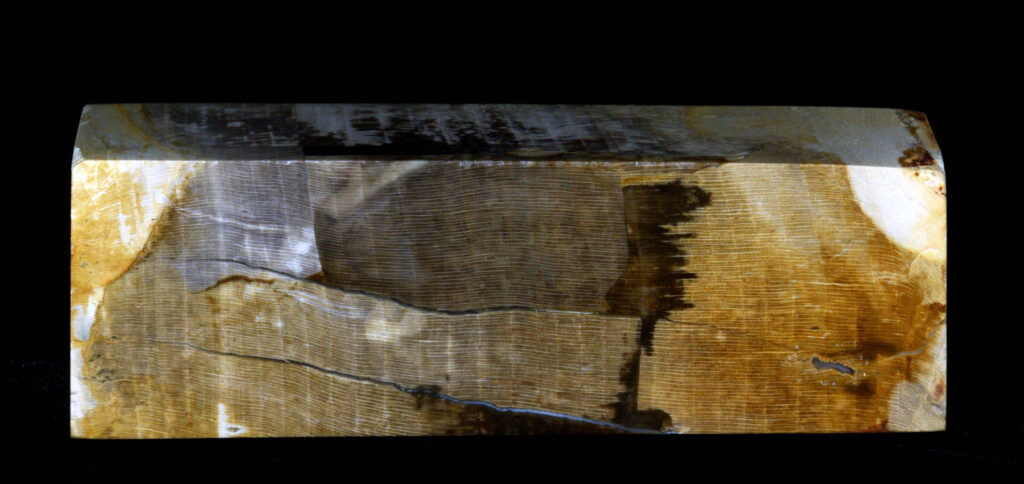
Sycamore hexahedron. Petrified sycamore from the Skip Adam’s ranch, Sweet Home, Oregon. Another gorgeous example. Also cut in my old Highland Park 24-inch rock saw and polished by an Oregon polisher on all six sides. Longitudinal, tangential, and cross-sections are properly aligned for microscopic observation. No glue or filler. 4.5 by 5 ends by 14 cm tall, elongated cubbish shape (aka cuboid or hexahedron); one pound and eleven ounces.
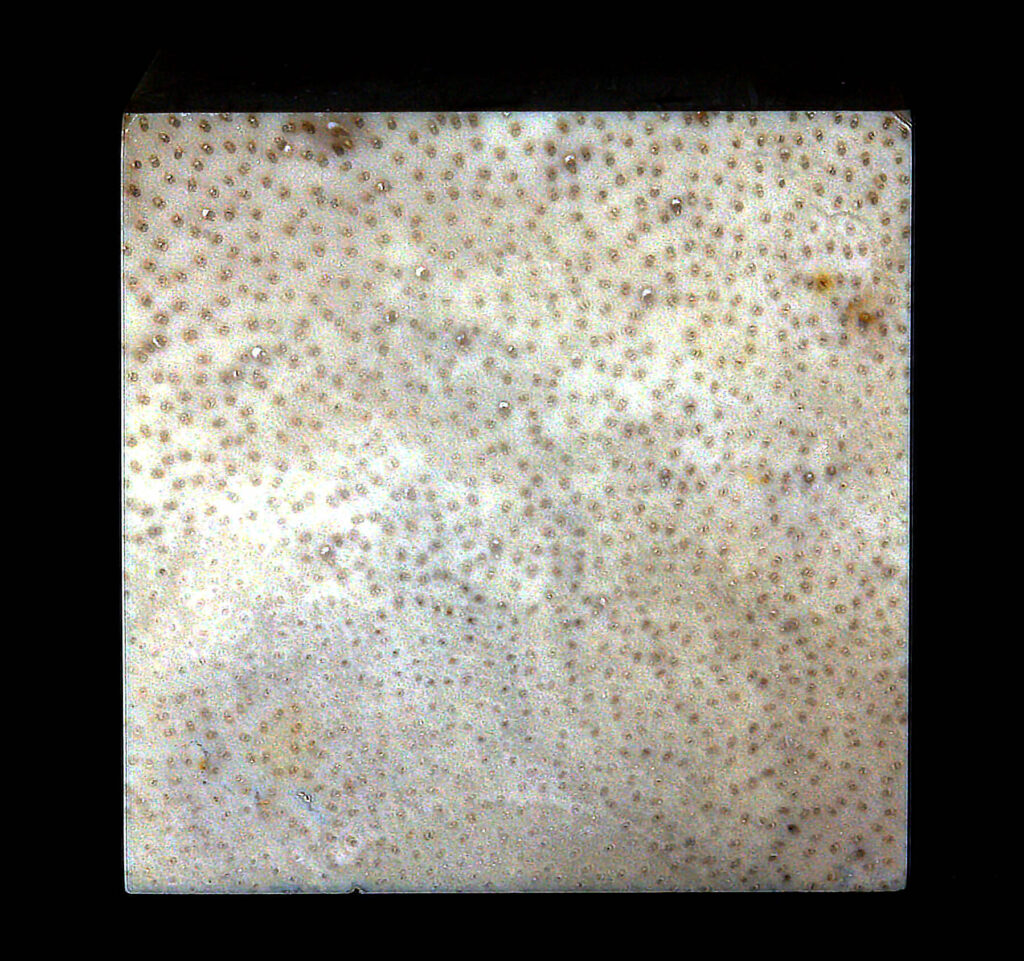
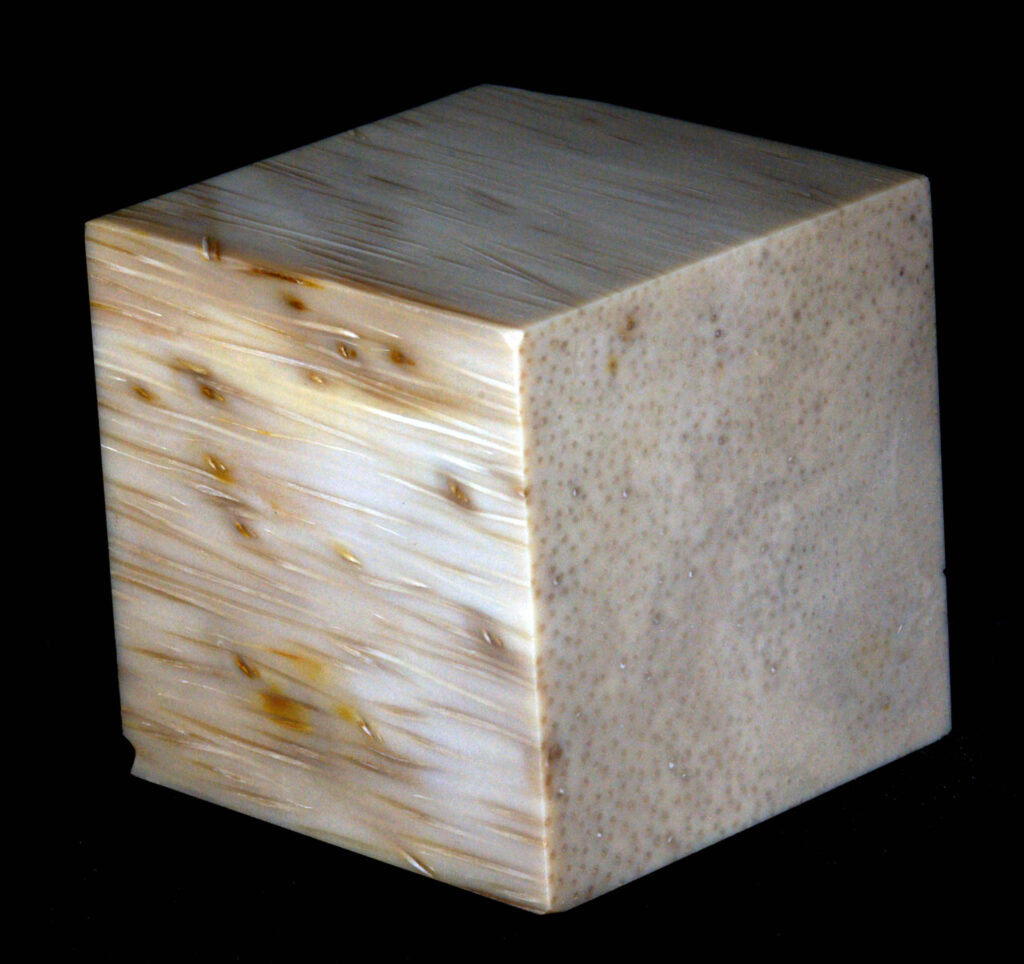

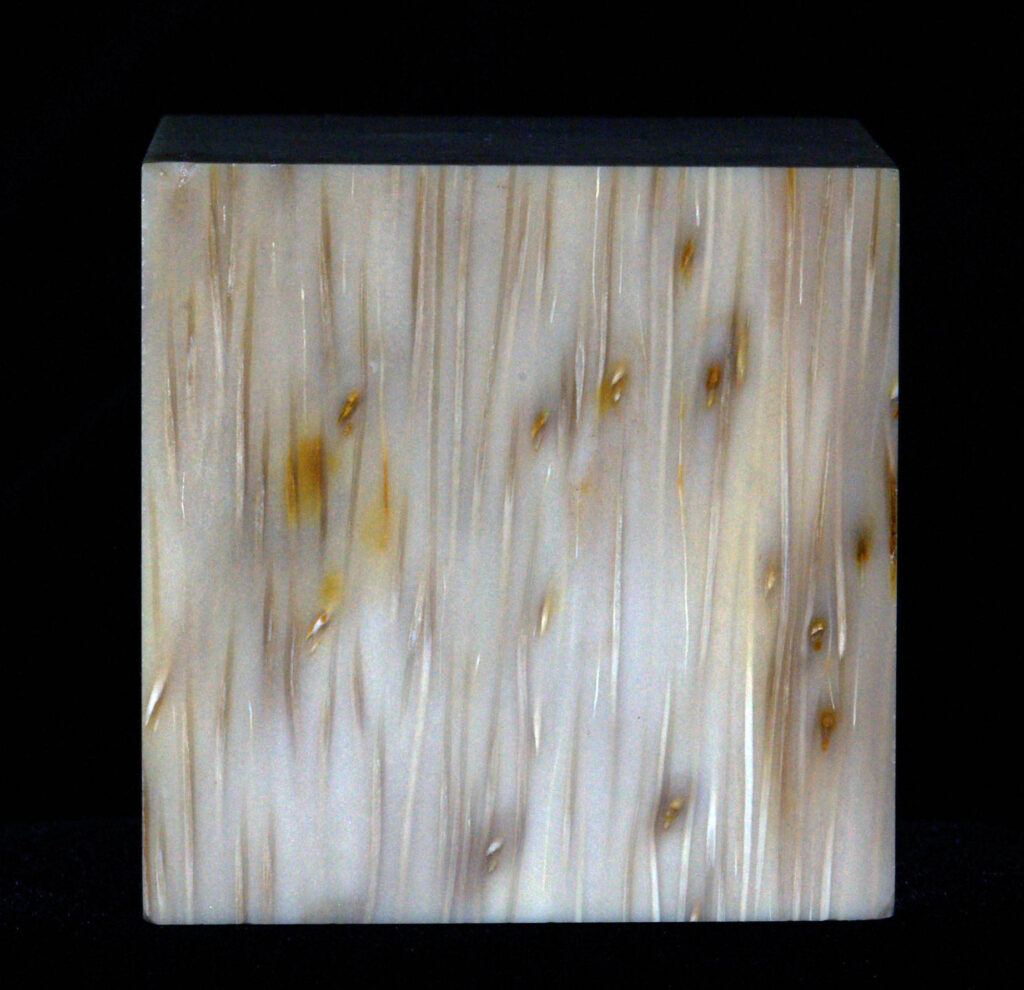
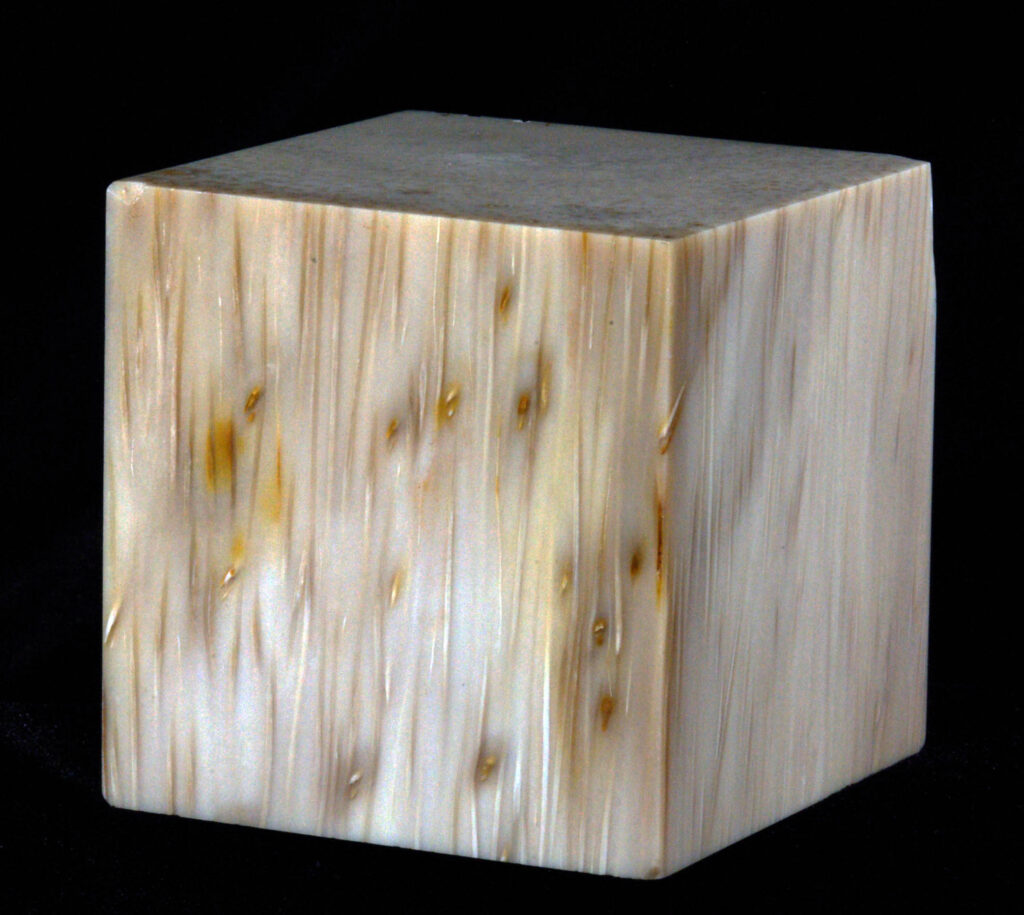
cube. Petrified palm. Flatwoods, Louisiana. Once again, cut in my old Highland Park 24-inch rock saw and polished by an Oregon polisher on all six sides. Longitudinal, tangential, and cross-sections are properly aligned for microscopic observation. No glue or filler. 7 cm cube; one pound and fourteen ounces.

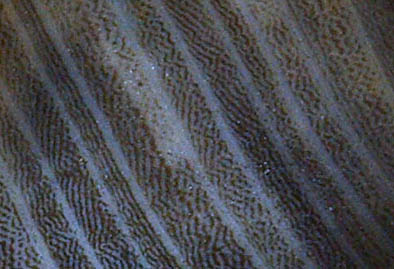

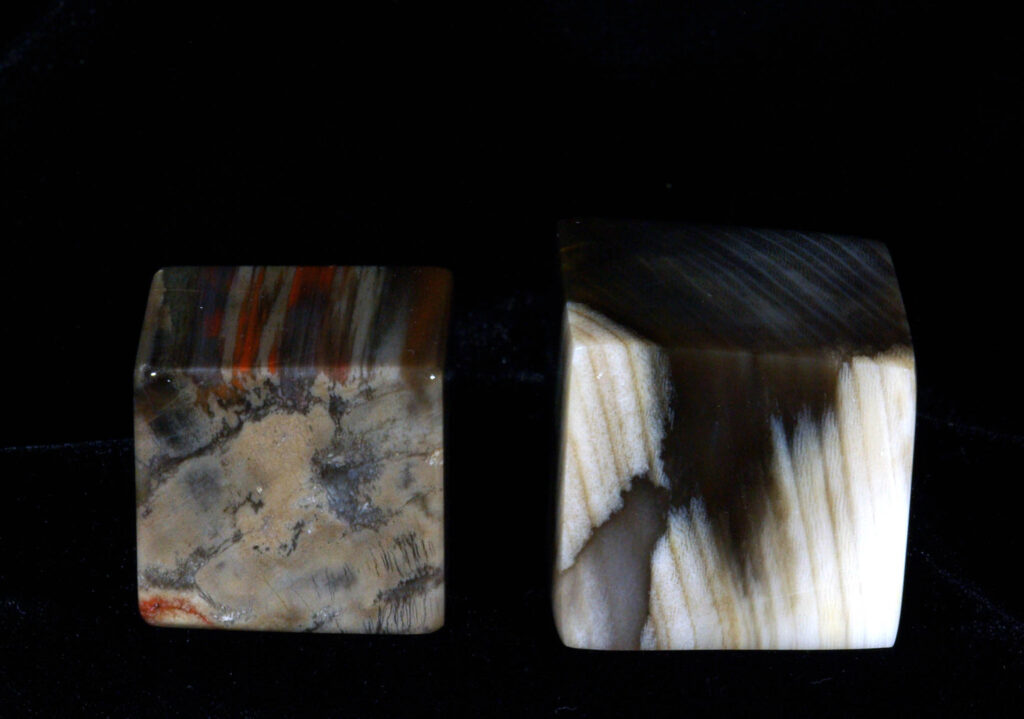

two identification cubes. In the Pacific Northwest rockhound heydays, an enthusiastic cadre of collectors became interested in identifying woods by genus and species. This unique obsession happened there because that’s where many different species were found. This wouldn’t work for Morrison formation wood collectors since there are many types but few that are identified. An outcropping of this interest in collecting by species is identification sets composed of small blocks of known woods, polished on the three aspects. These blocks are used to identify woods. I only have these two, but I’ve seen sets with scores of blocks. {It seems that most of these sets were parts of collections where the rockhound passed away in the 1970s or 1980s.} The Sweet Home area was well known for hosting a wide assortment of wood species, however some of the early estimates were too high. The larger one is elm and measures 4 cm. The smaller is a conifer and measures 37 mm.
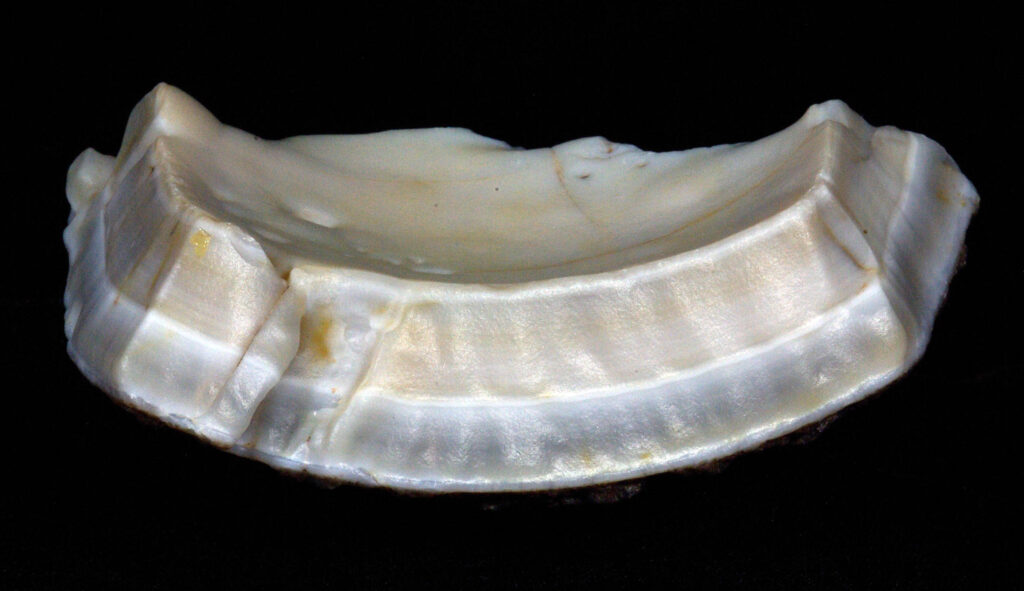
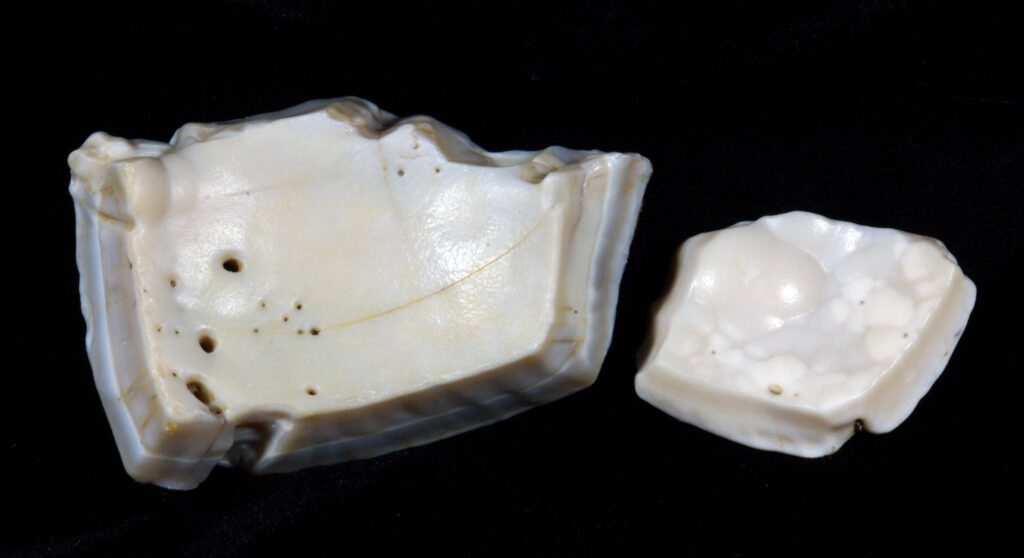
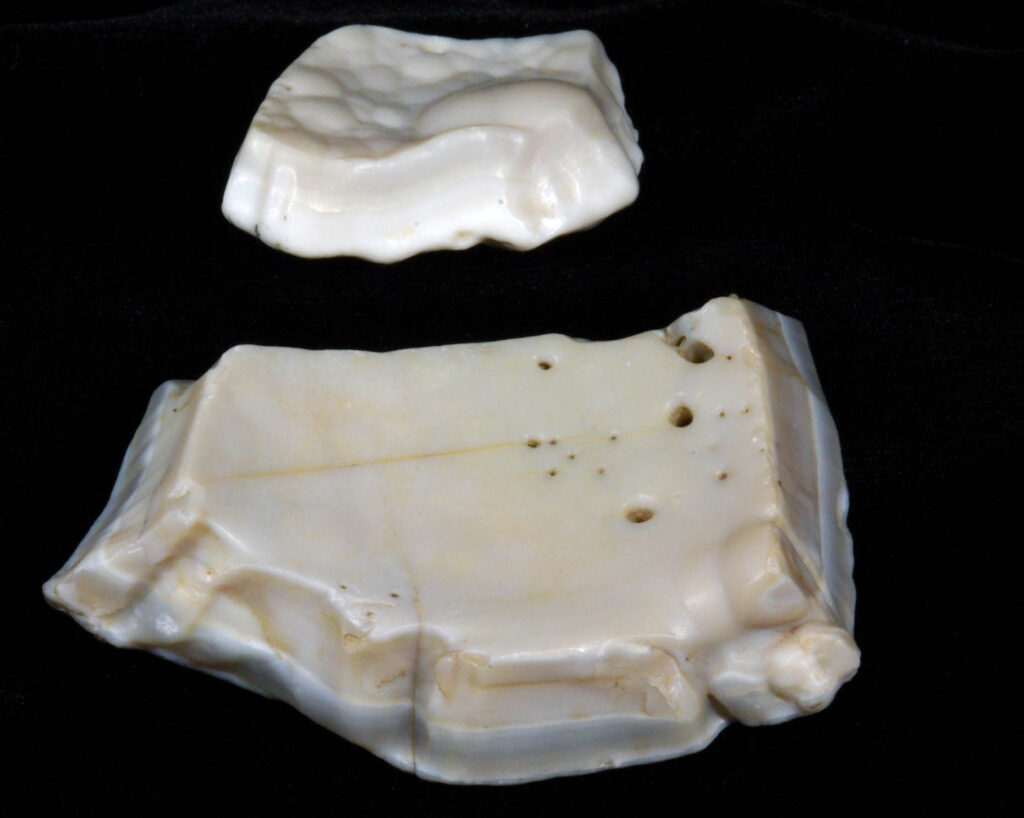

Two pieces dinosaur eggshell. Tyrannosaurid; Upper Cretaceous; Maastrichtian-Allen formation; Near General Roca, Argentina. As found. Eight ounces and two ounces.

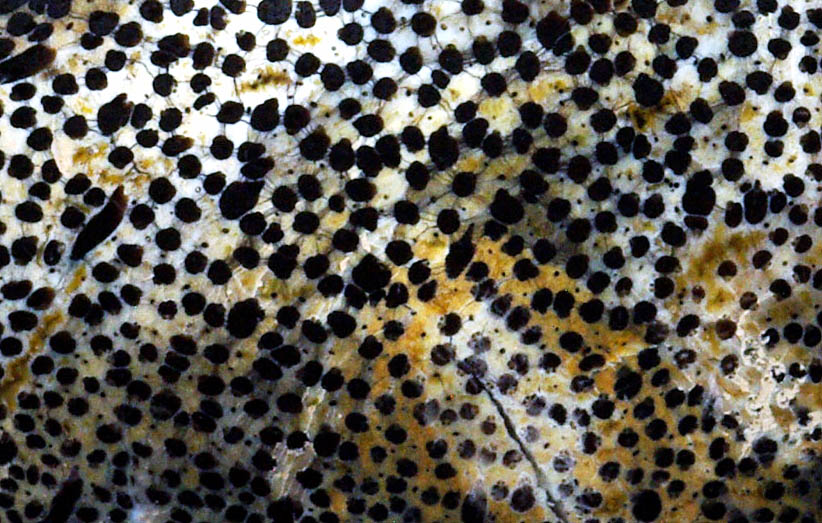
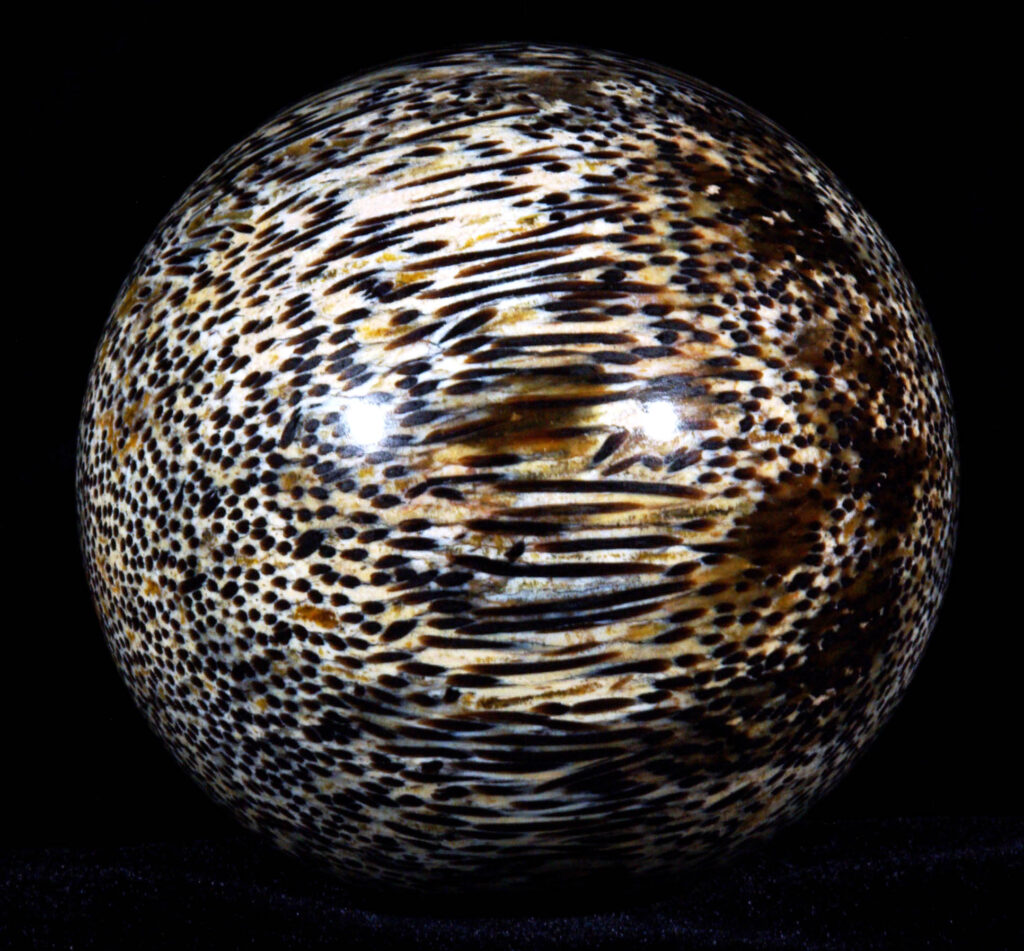


sphere made from Nephi palm. 76 mm. one pound and two ounces.
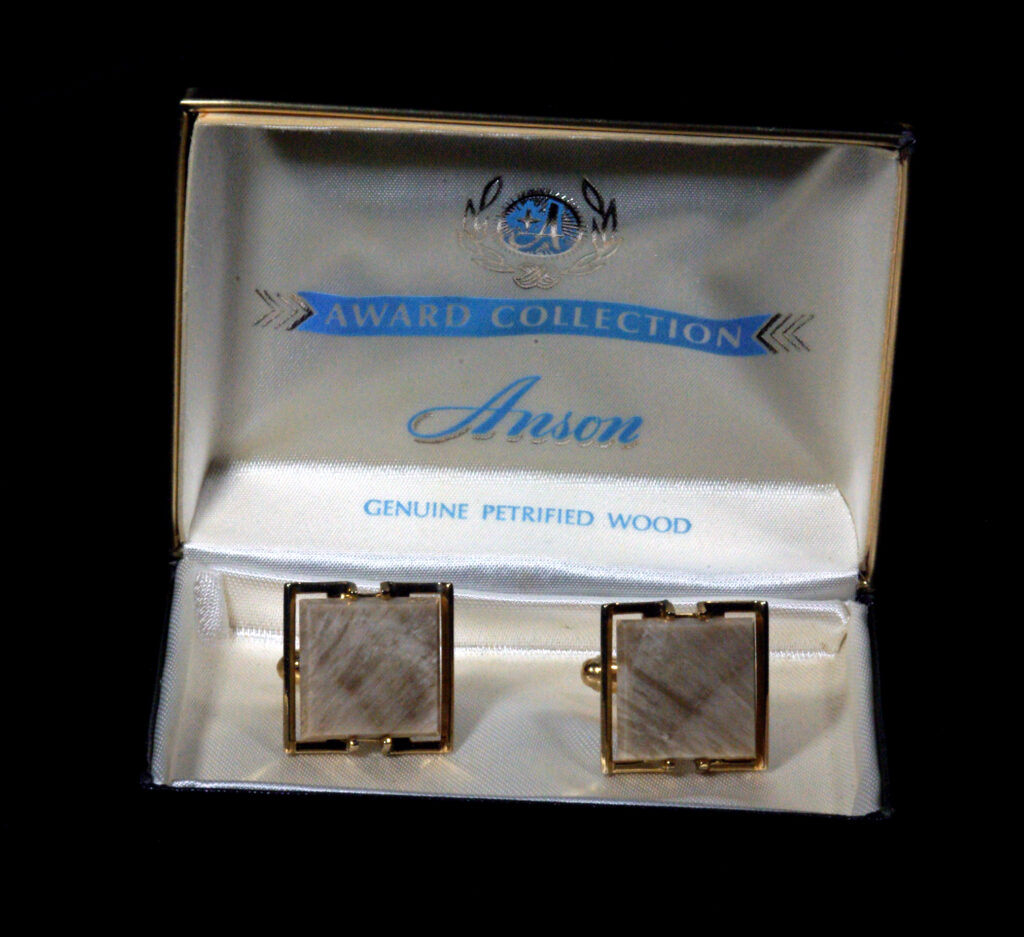

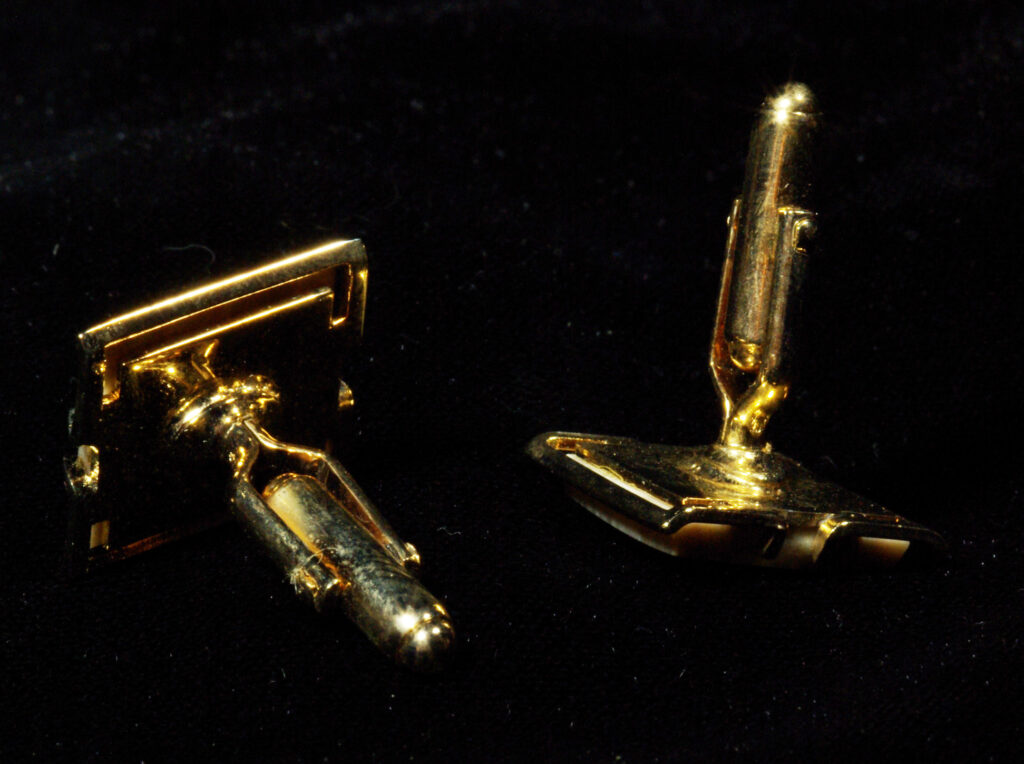
Petrified wood cufflinks. Gold plated. As the presentation case notes: genuine petrified wood.
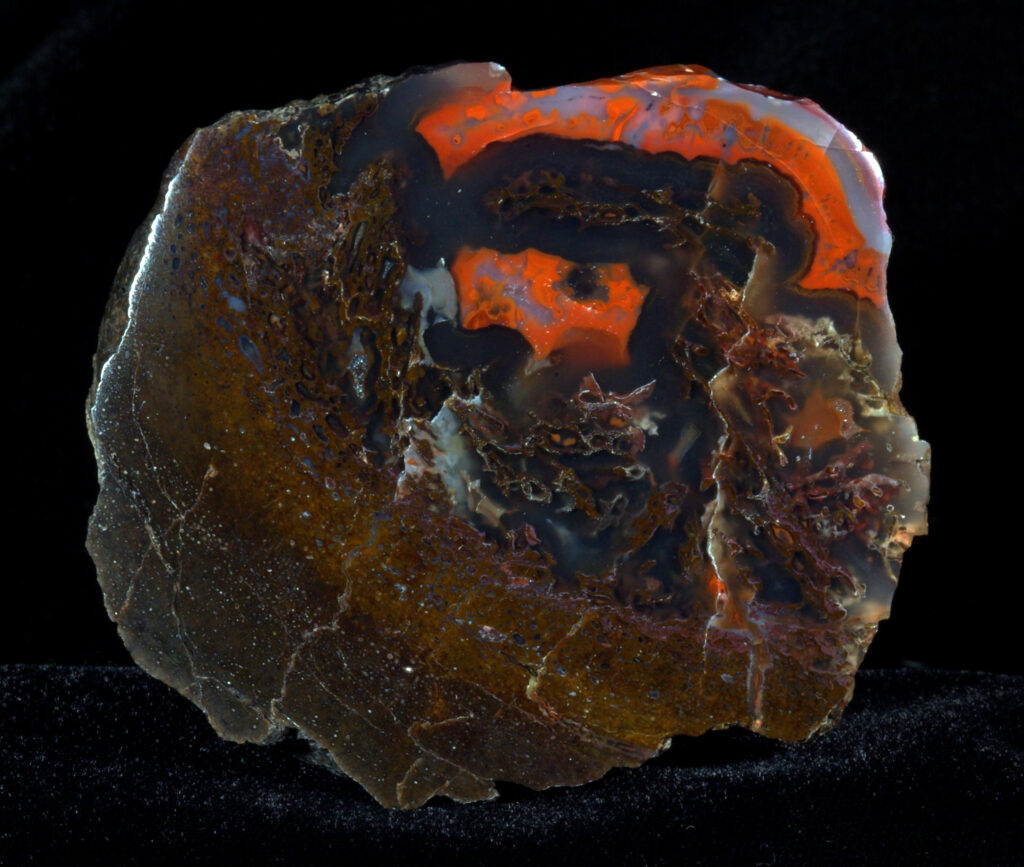

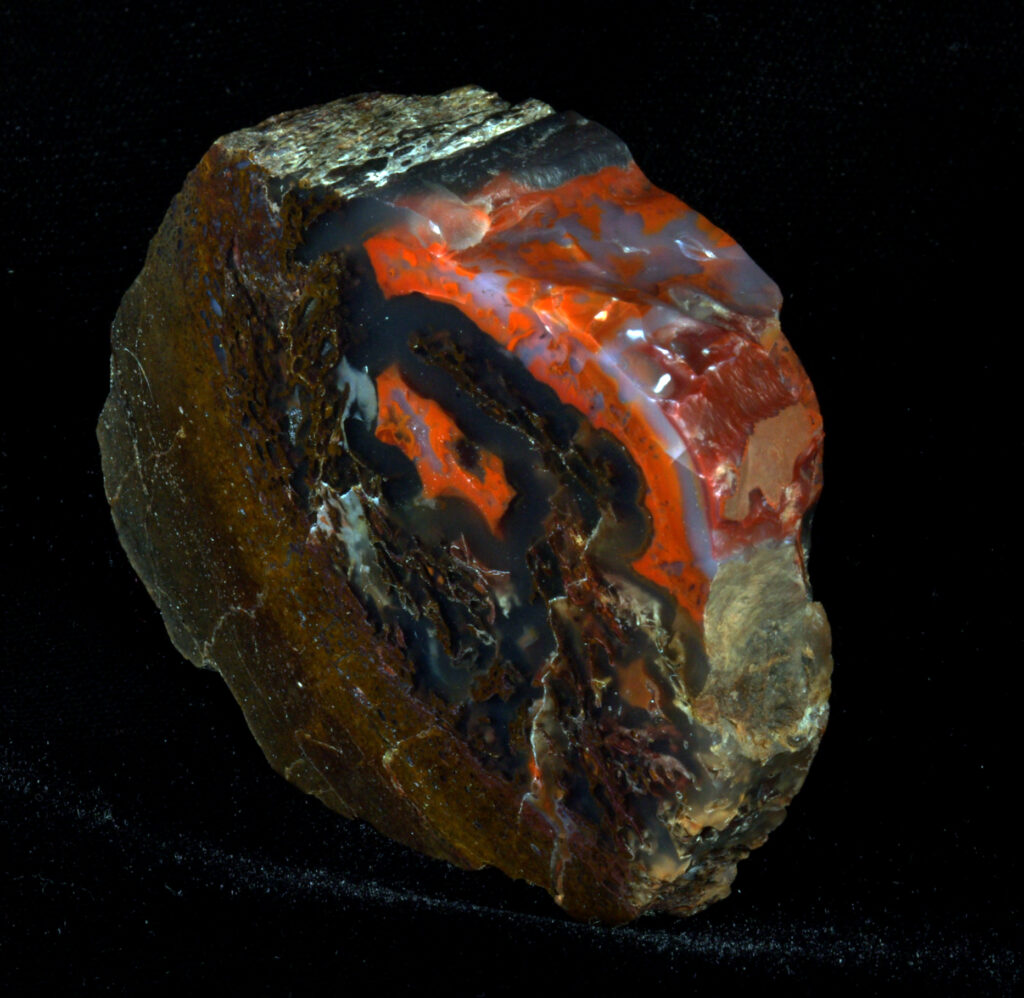
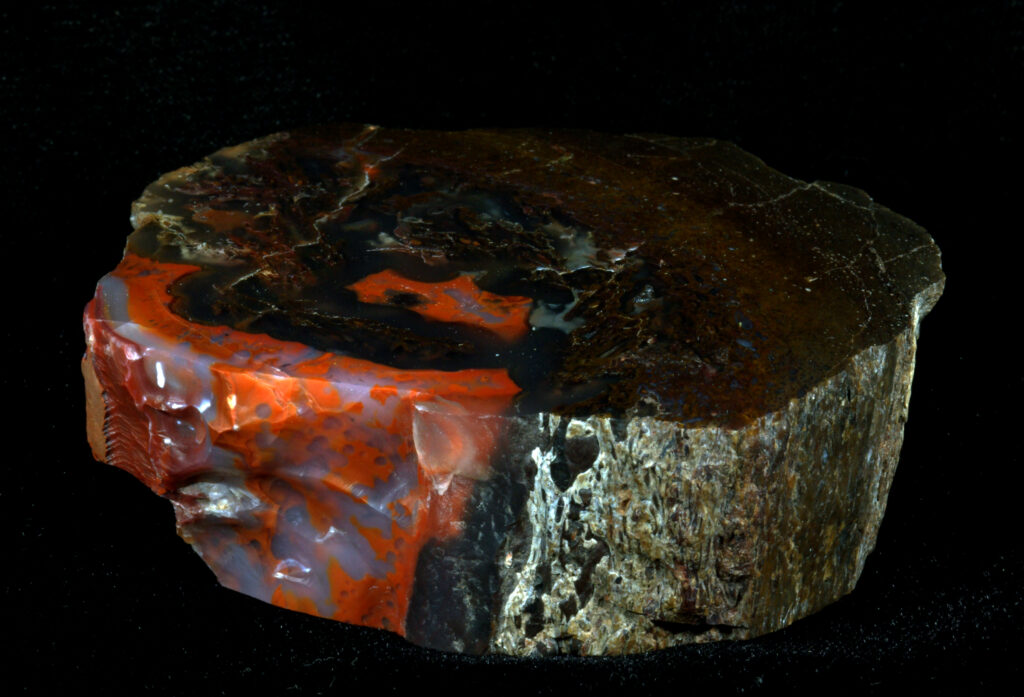
Dinosaur bone. Colorado Plateau. Jurassic; Morrison formation. This type is known as float. The idea is that while it may actually have once been part of a dinosaur’s bone, this was part of a much larger bone that abraded away over the eons as it floated around with sands and gravels. Remarkable red. No glue or filler. Banks collection. Specimen round, cut on both sides and polished on one. 5.5 by 6.5 cm polished face; 23 mm thick; six ounces.
Historical note: in the 1970s, the BLM was on the record as allowing the collection of float. I have heard that this is not always their current interpretation. Collection of articulated fossil skeletons has long been forbidden on National lands.
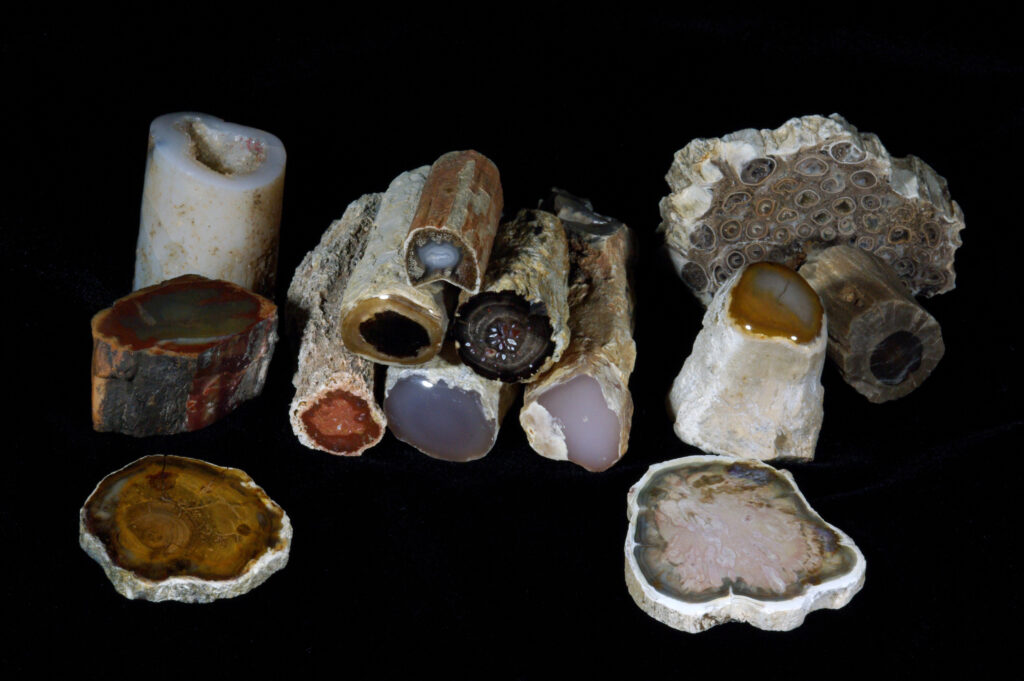
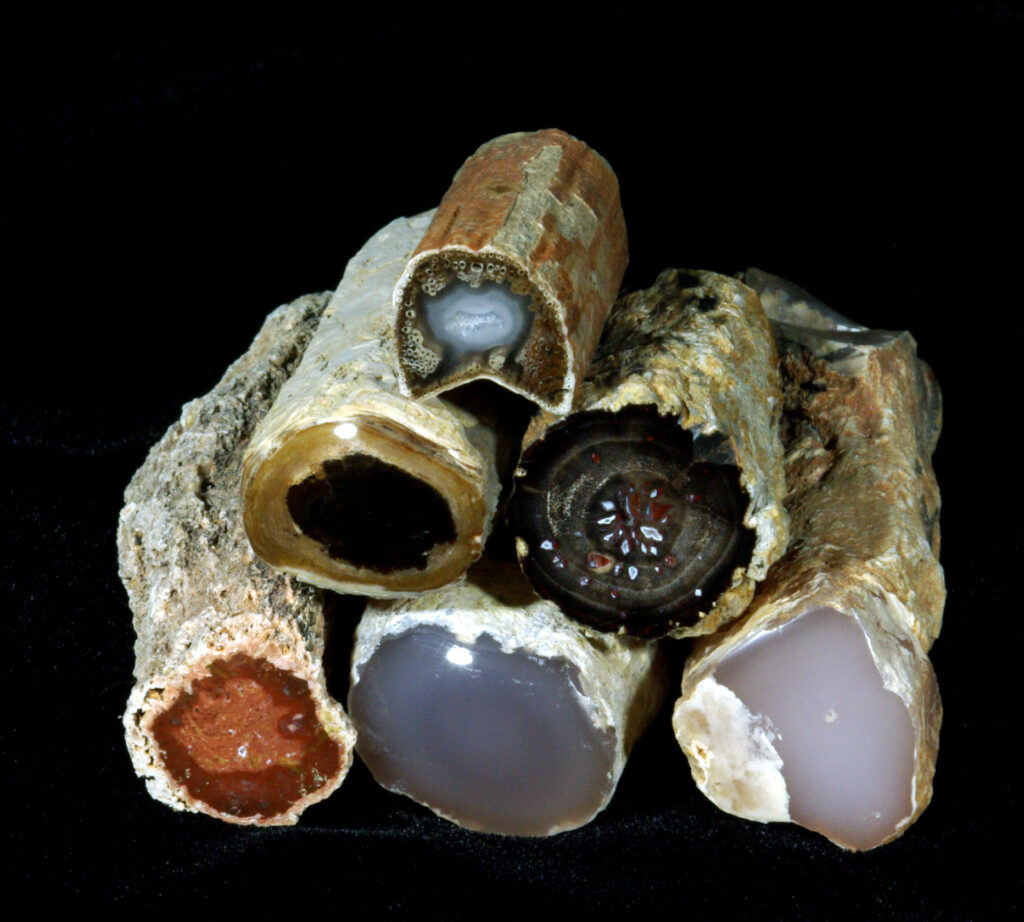
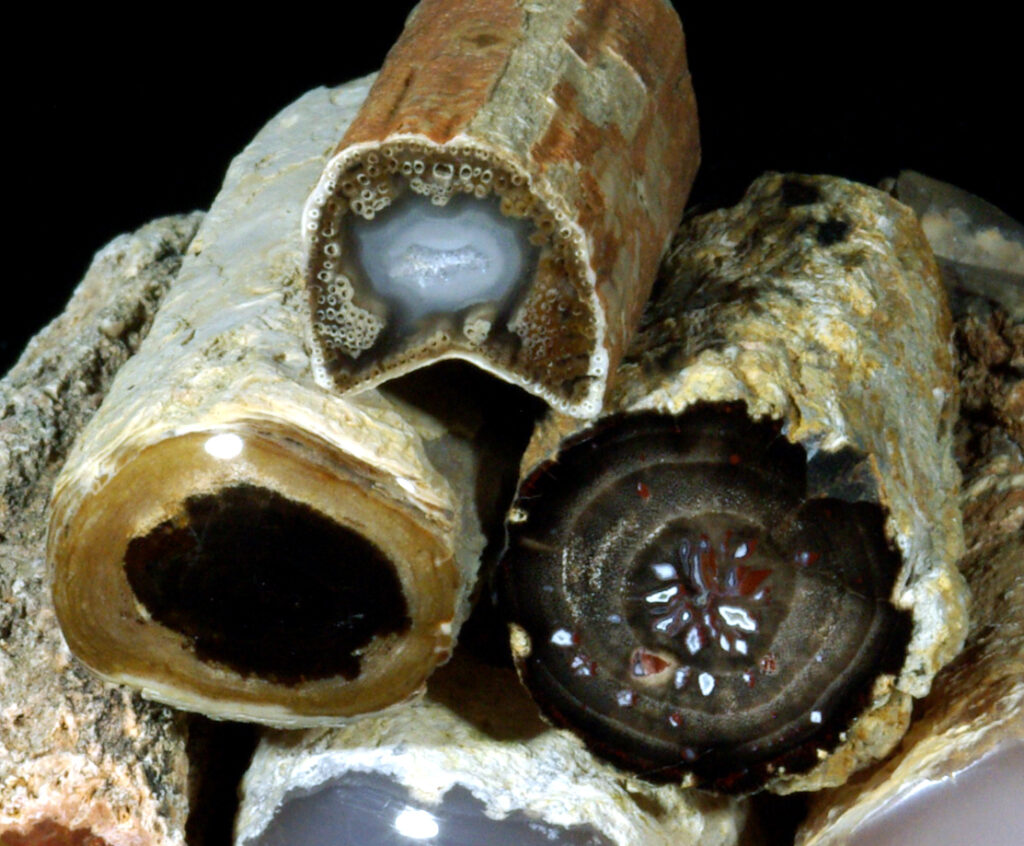
Set of thirteen small specimens. These were pieces I set aside over the years, thinking they were especially nice, albeit small. The set contains quite a variety. Wood from Argentina, Madagascar, Oregon, Nevada, Wyoming, Utah, and Washington. The Acrostichum has excellent cell detail. The other small Wyoming piece has a fabulous red and white agate center. It appears to be a ring-porous hardwood.

14 large, dinosaur cabochons. 50 mm. Colorado Plateau; Morrison formation. Wide range of color and mineralization. All cut by Dean Lowdermilk.
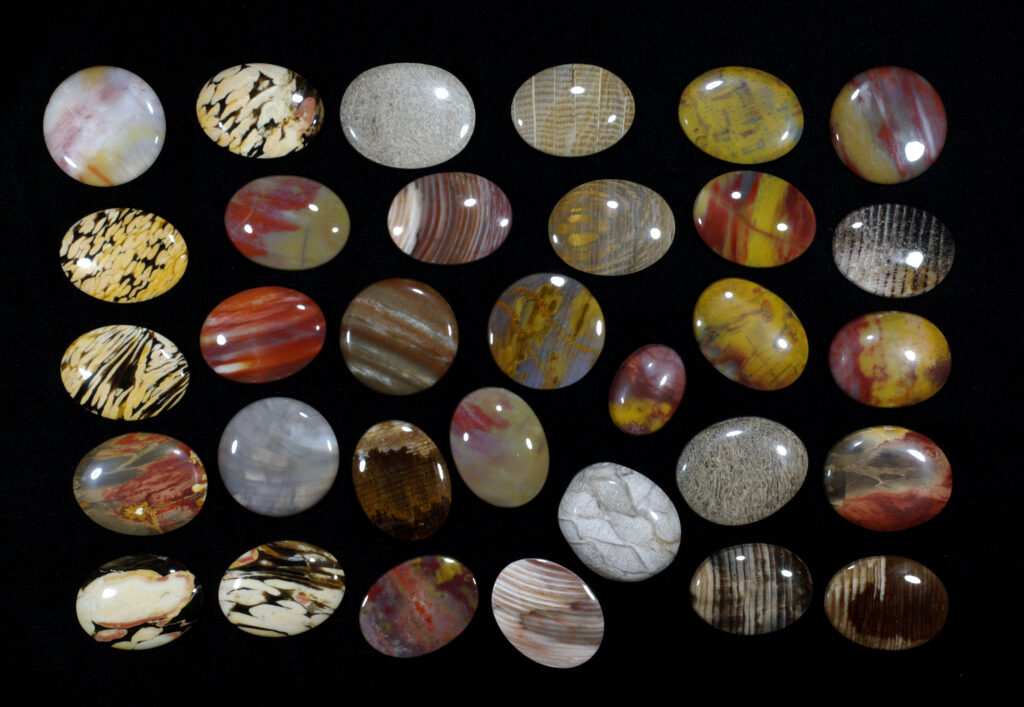
32 small, petrified wood cabochons. most 35 to 40 mm. Australia: shipworm wood and pentoxylon; Utah: Tempskya, Argentina cycad, Arizona, and Oregon with several locations and species. I cut eight of these (those that are less perfect as the other are machine made).
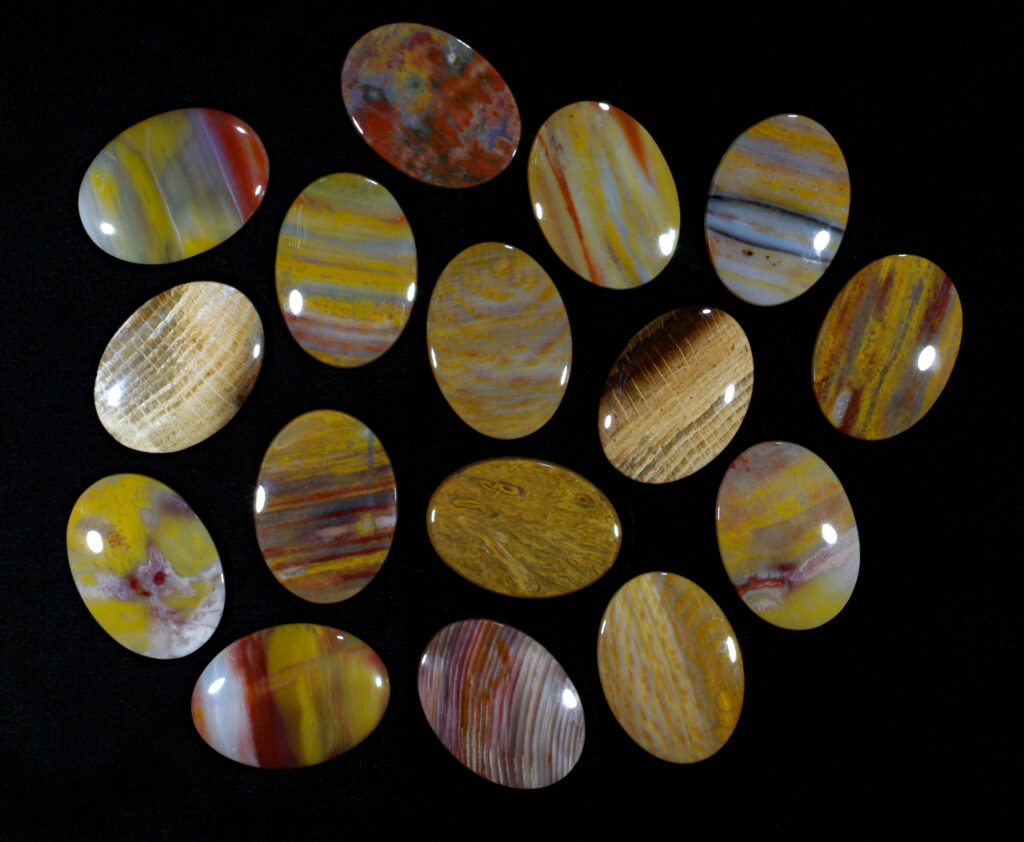
16 large, petrified wood cabochons. 50 mm. Arizona and the Pacific Northwest.
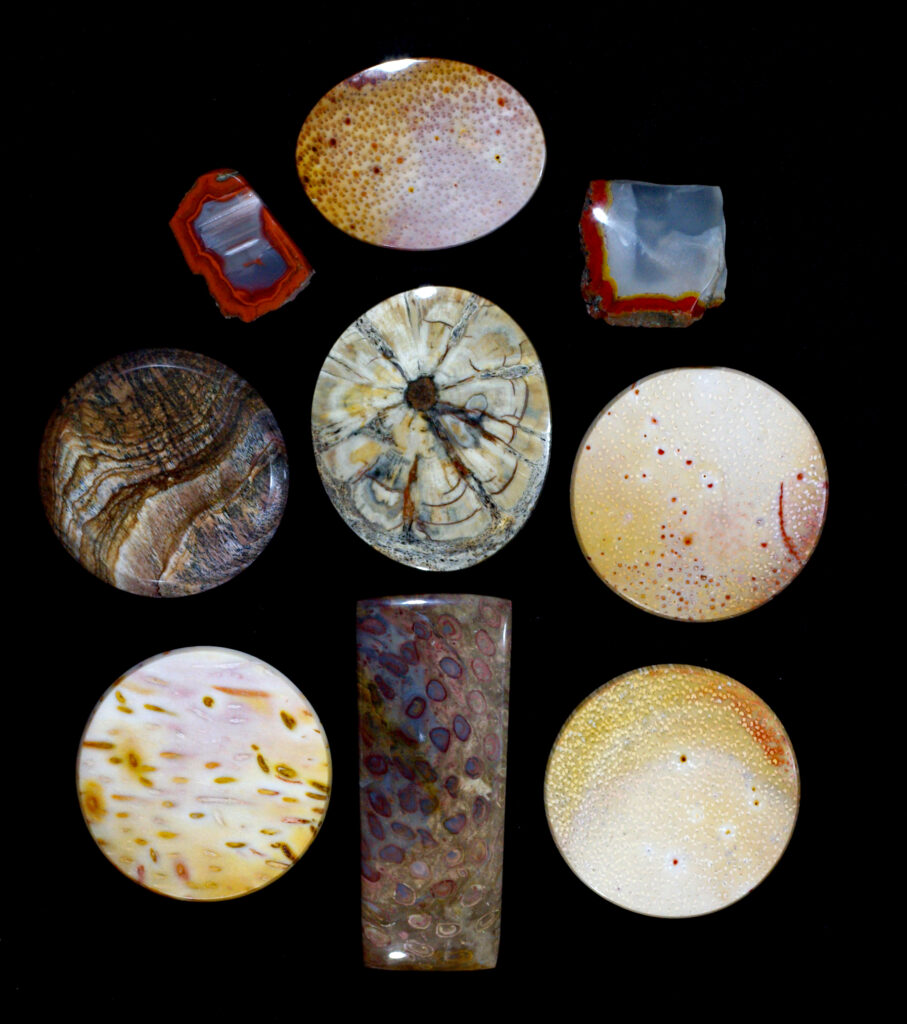
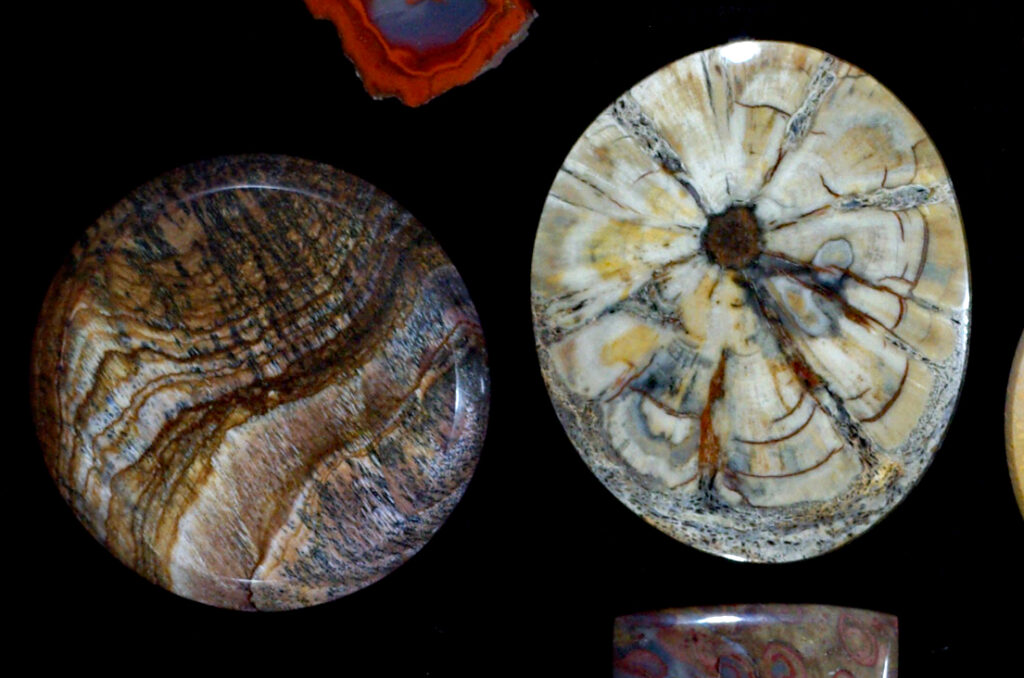
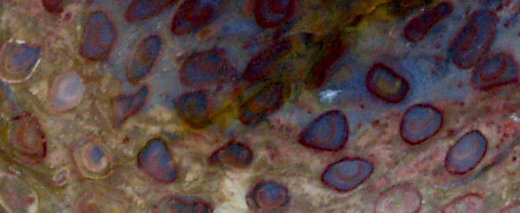

Assorted cabochons and whatnot 1. Petrified wood, 9 pieces. I had these put aside with the idea that one day I might use them in my silversmithing. I haven’t touched my silversmithing supplies for a quarter of a century, so I don’t expect I’ll be using them. All interesting and attractive pieces. Four extra-large Louisiana palm, two small Yellow Cat red woods from Kladder Collection; Saddle Mountain (Washington) picture wood – note the landscape of mountains and forests (6 cm); some of the most beautifully preserved Queensland Osmunda, which I cut and polished (9 cm long), and the centerpiece, which is an exquisite, near full round slice of Hermanophyton from McElmo Canyon, Colorado (68 mm).

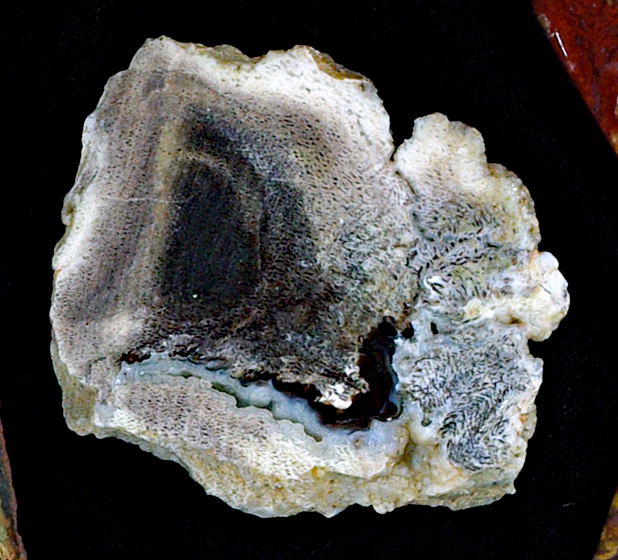
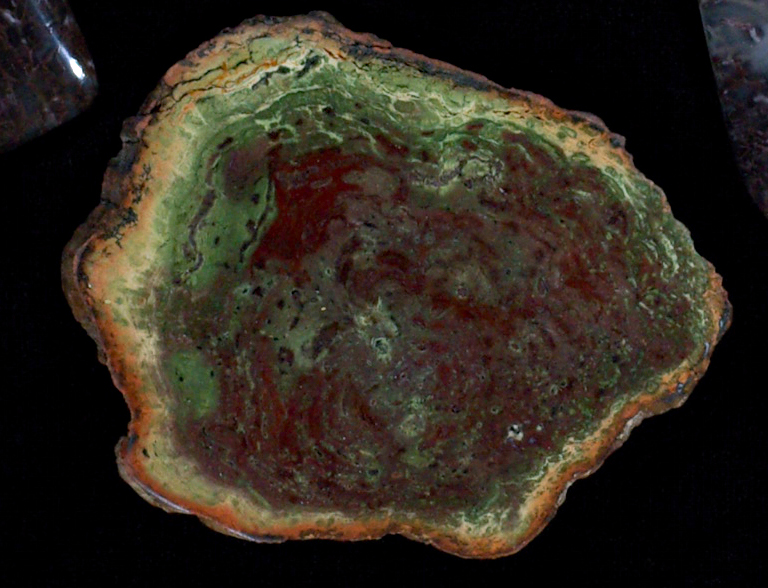
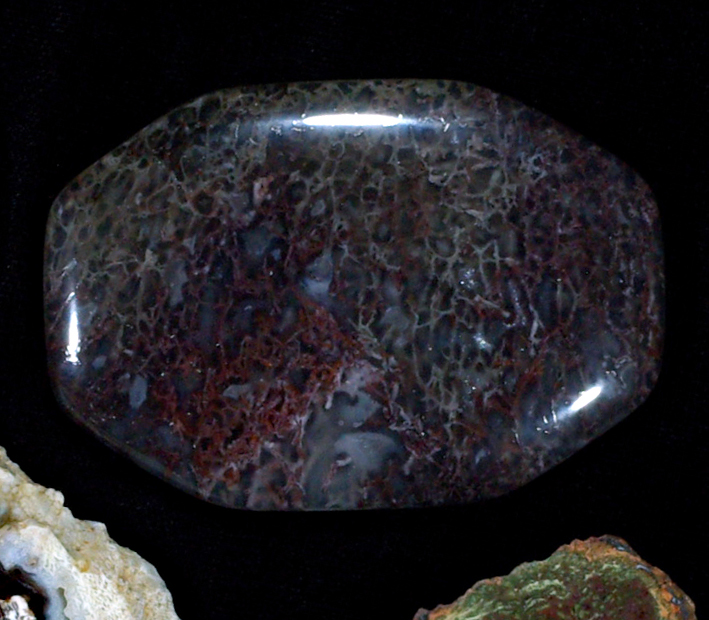
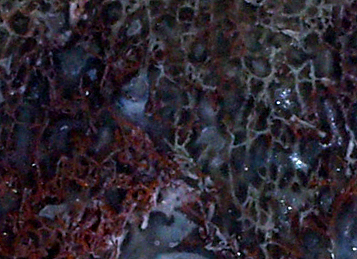
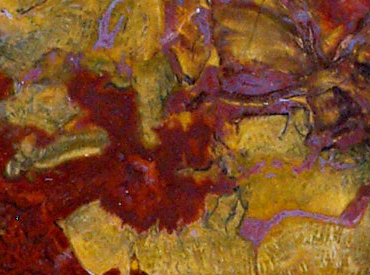
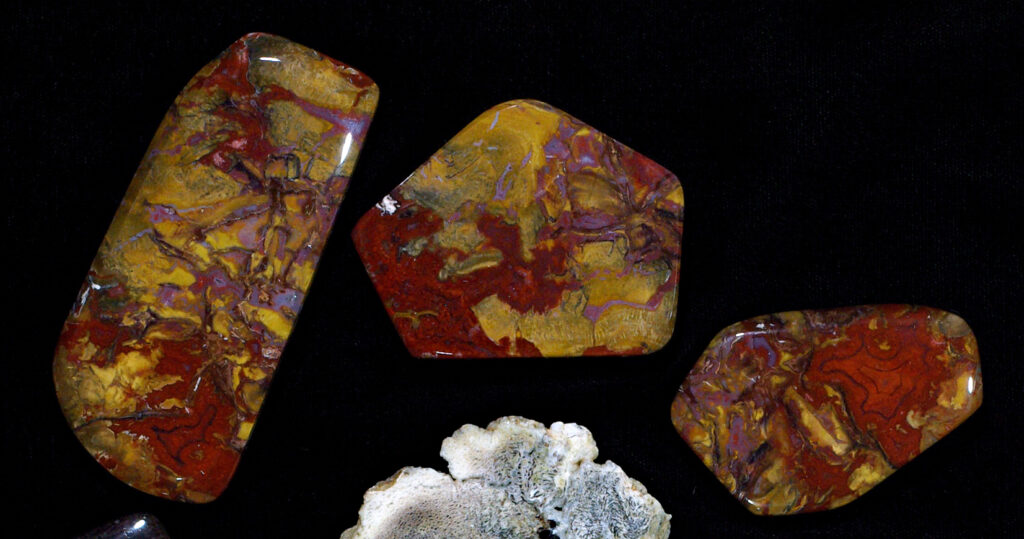
Assorted cabochons and whatnot 2. Petrified wood, 7 pieces. At the center is a perfect specimen round of Joshua tree (protoyucca shadishii), one of the rarest woods (62 mm). Below that is a full round from Swartz Canyon, a conifer with good cell structures (8 cm). Flanking those two are two extra-large, killer spider web dinosaur bone cabochons by Dean Lowdermilk (68 and 77 mm). The three pieces on top are from the same amazing log as is Utah CASE top shelf 1. The Talk of the Show. (93, 66, and 62 mm)
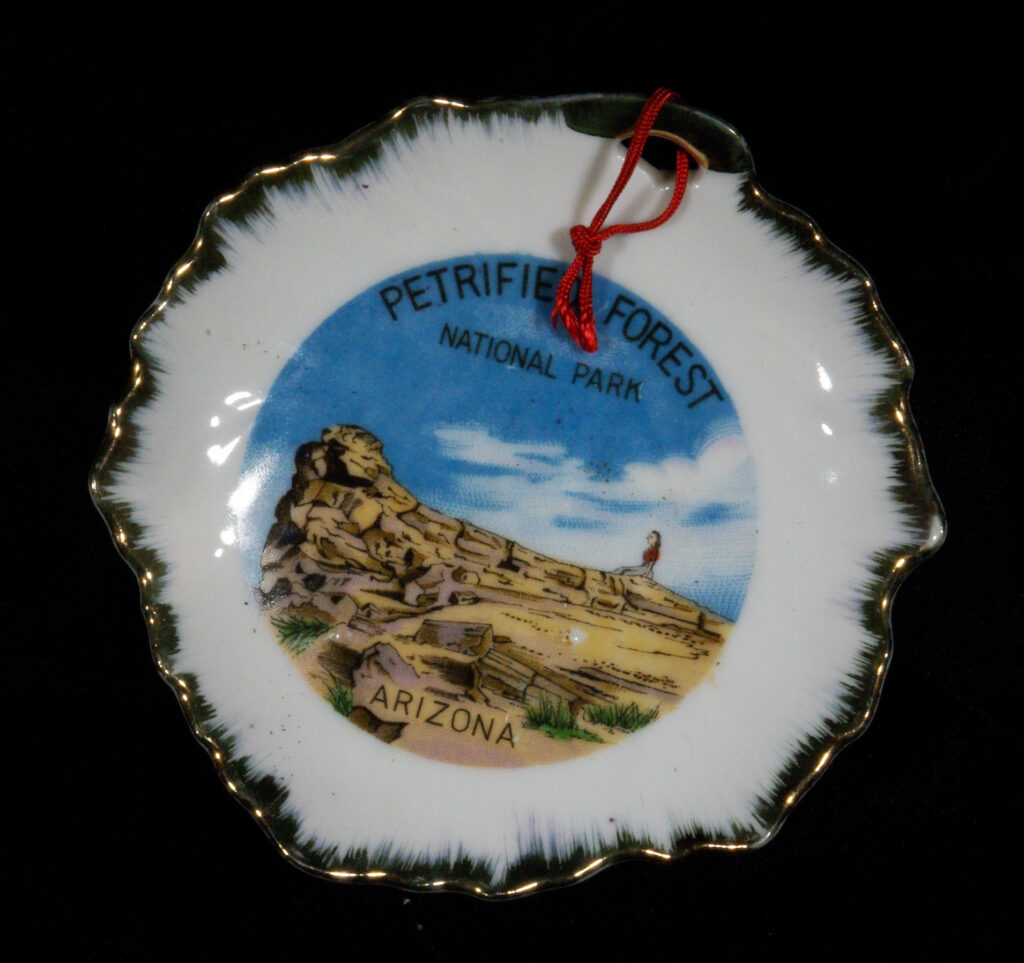
Gift shop trinket – a gilded ceramic dish depicting Old Faithful log. A woman with a vacant expression sits atop the log, wondering when she can get a drink of soda pop. Shown on page 43 of Ancient Forests. 10 cm diameter.
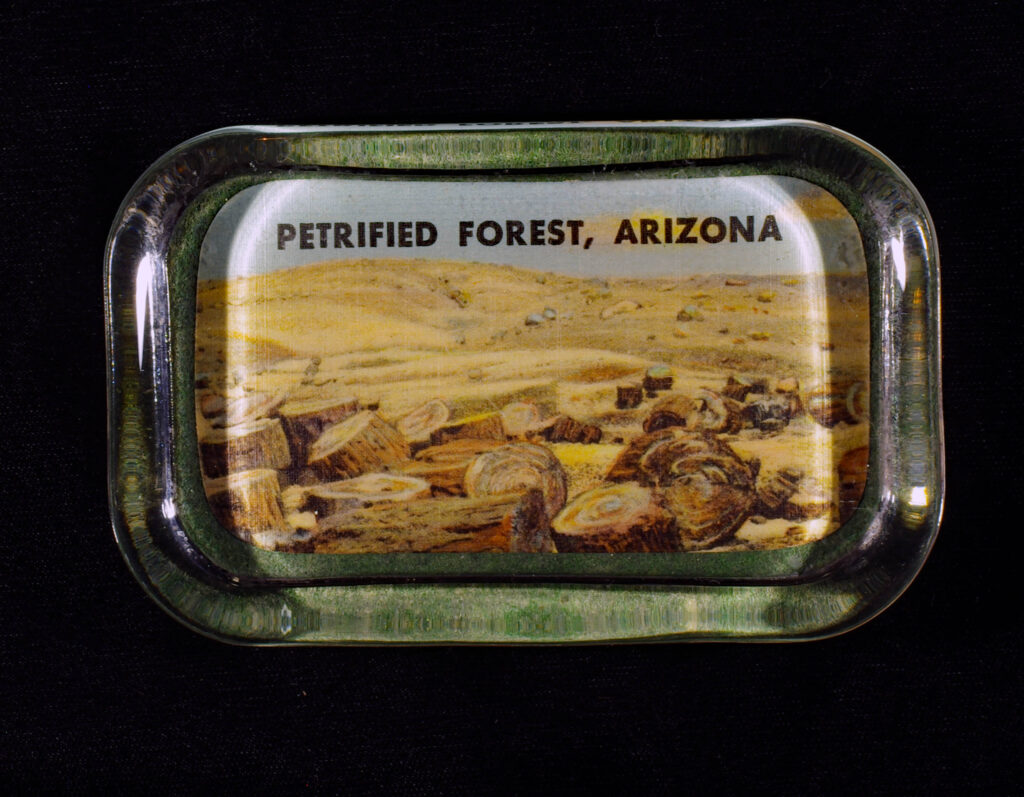
souvenir paperweight – Shown on page 43 of Ancient Forests.
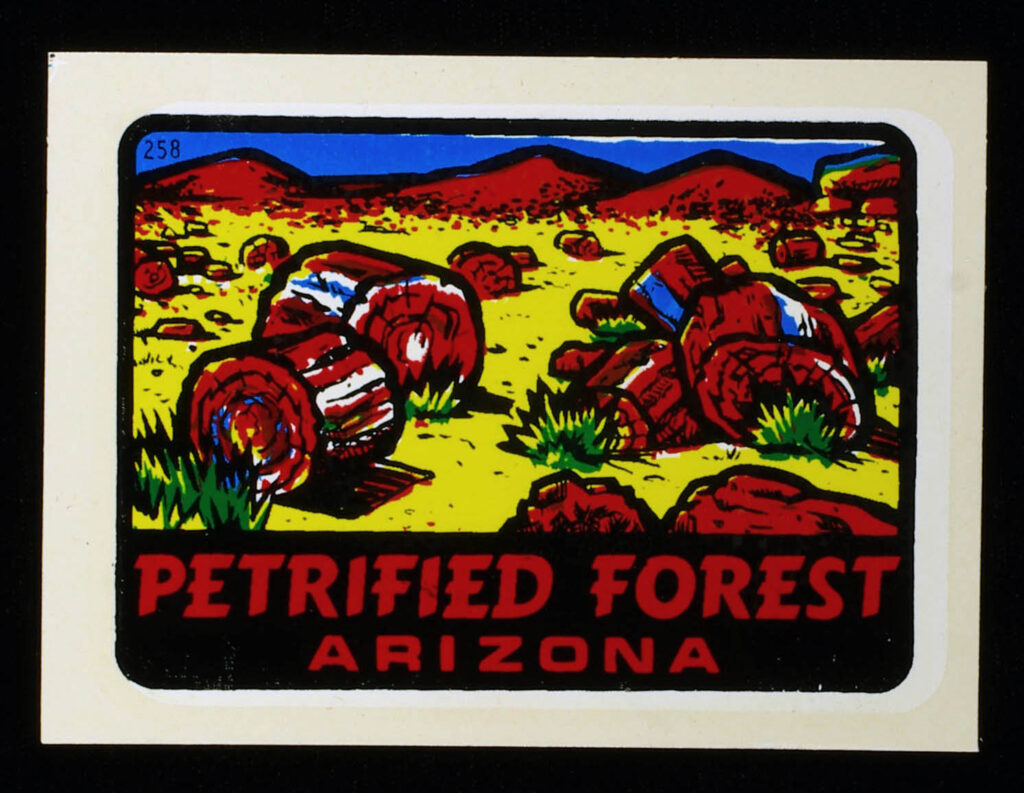
souvenir sticker – Shown on page 43 of Ancient Forests.
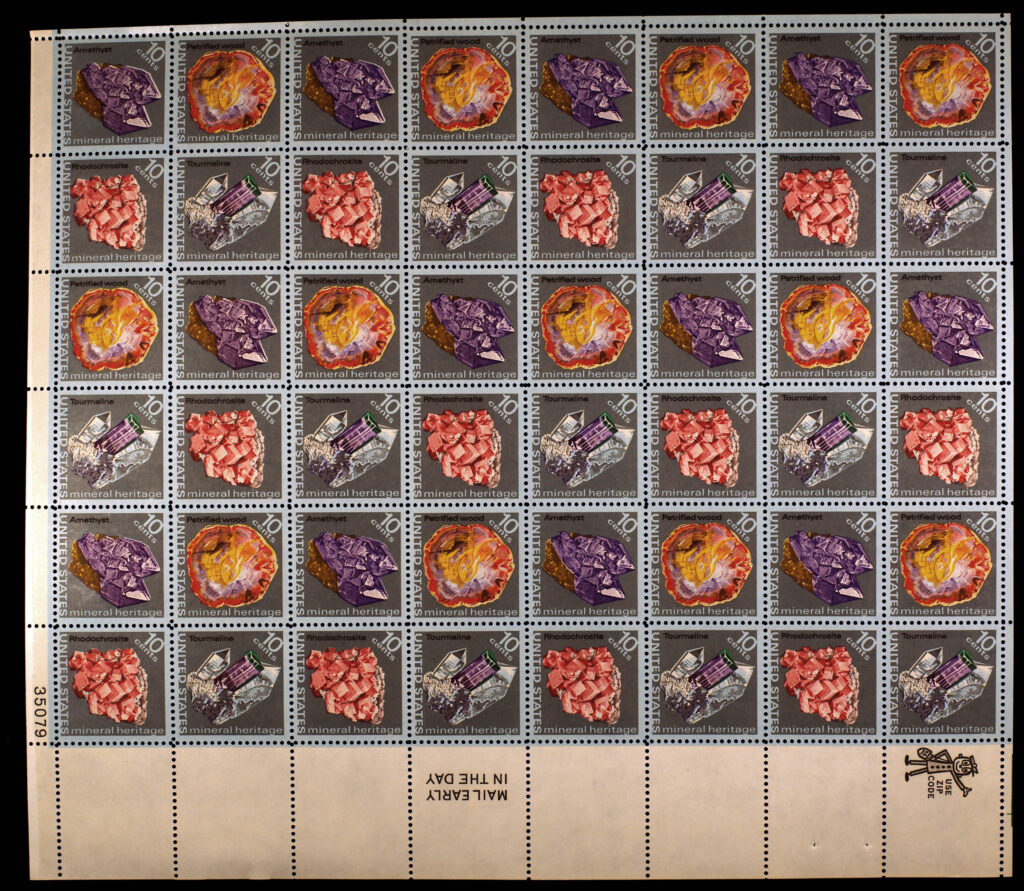
sheet of USA 10-cent Mineral Heritage stamps from 1974, including a slice of petrified wood.

postcard from early 1900s. Click here to see more postcards. Includes all twelve postcards pictured in Ancient Forests on pages 44 and 45.
Below: three issues of Arizona Highways with petrified wood depicted on the covers.
